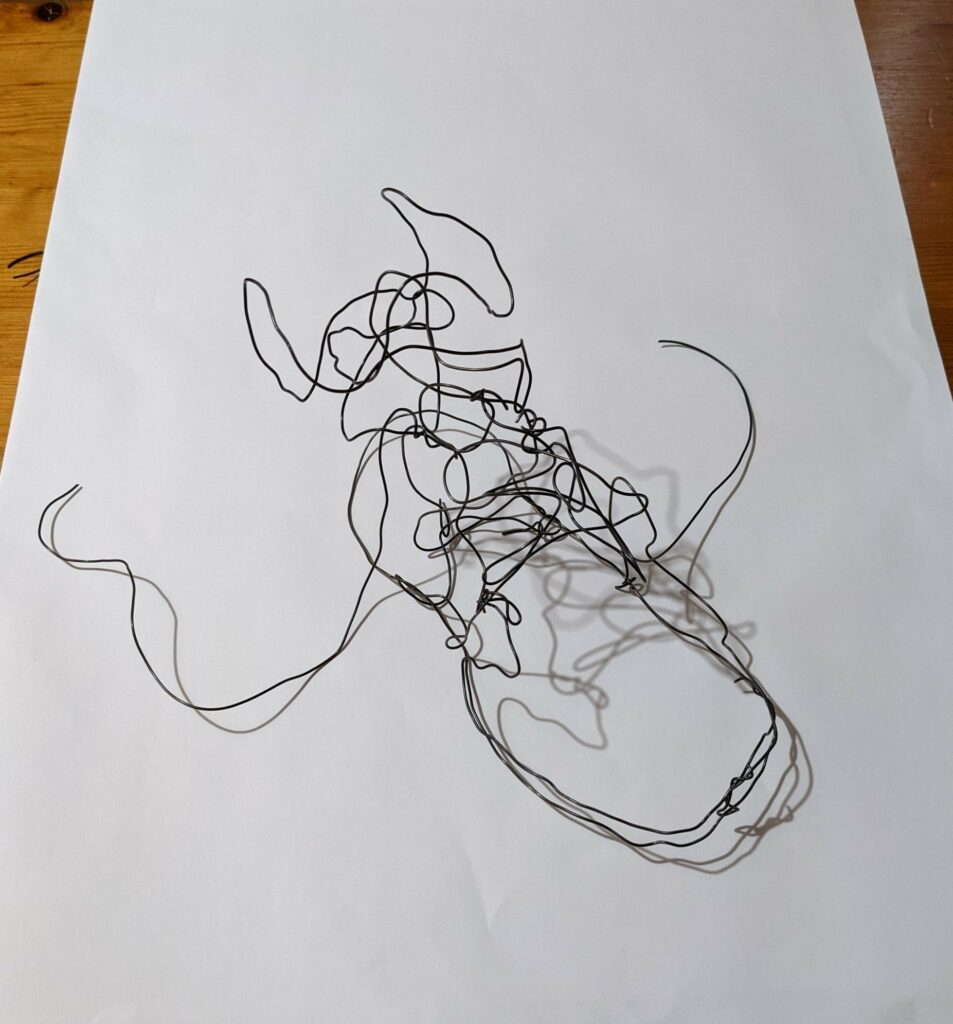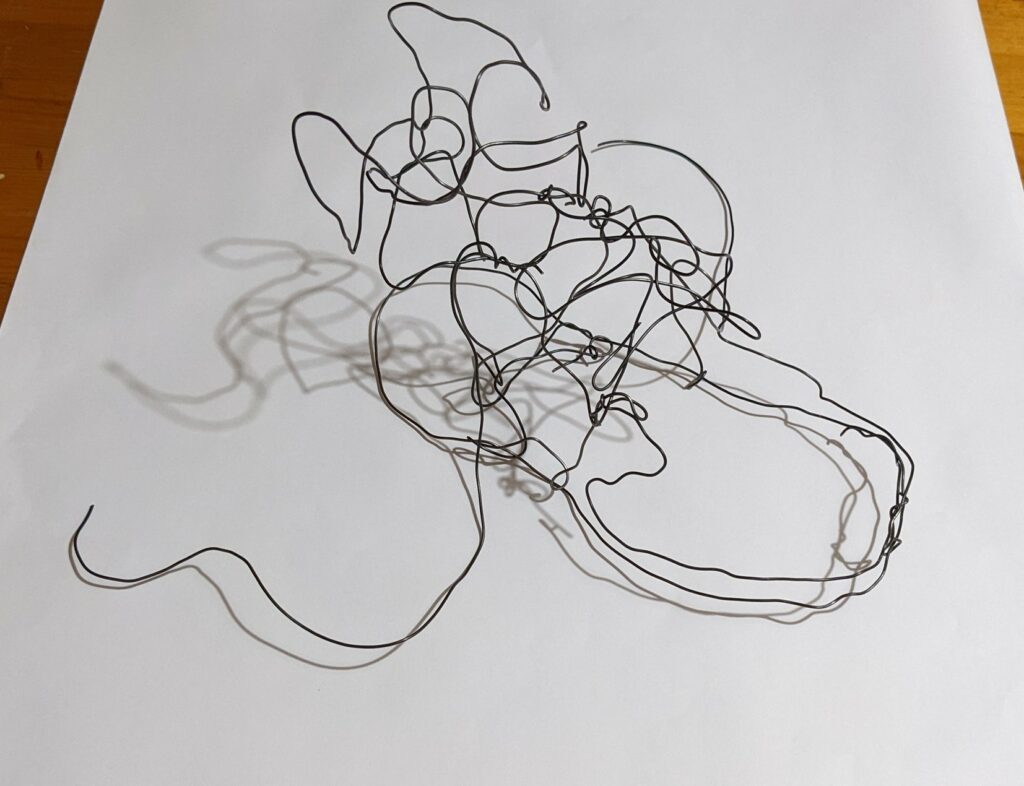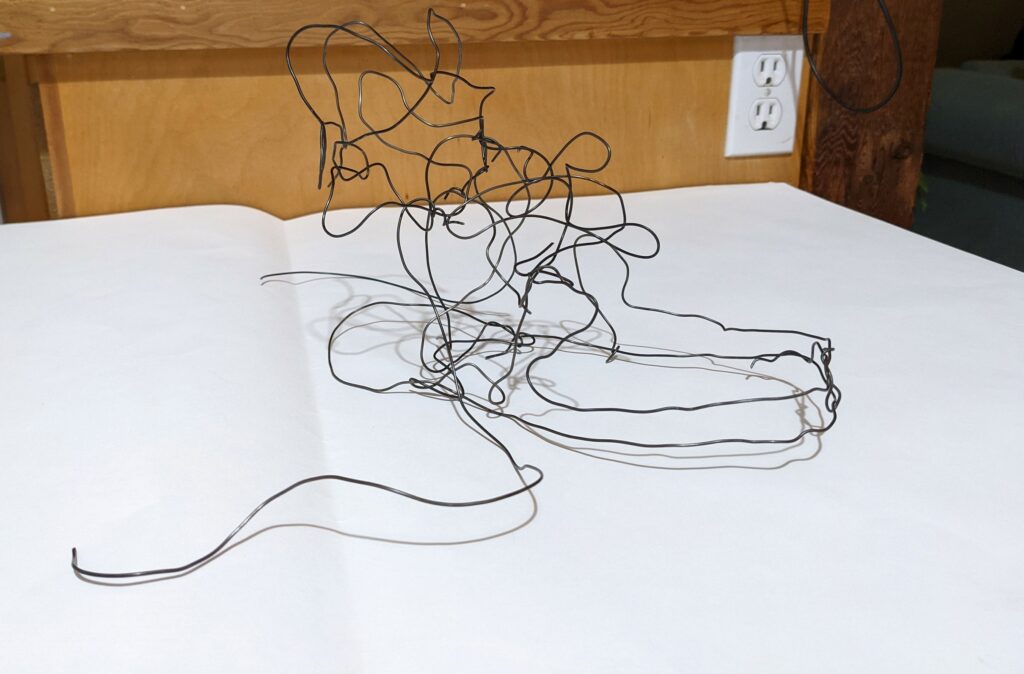FIN 135 Unit 3
FIN 135 Unit 2
FIN 131 Unit 3
FIN 131 Unit 2
Studio Project 3 – Being Human: Making a Monster
Reflection, Ideation & Process
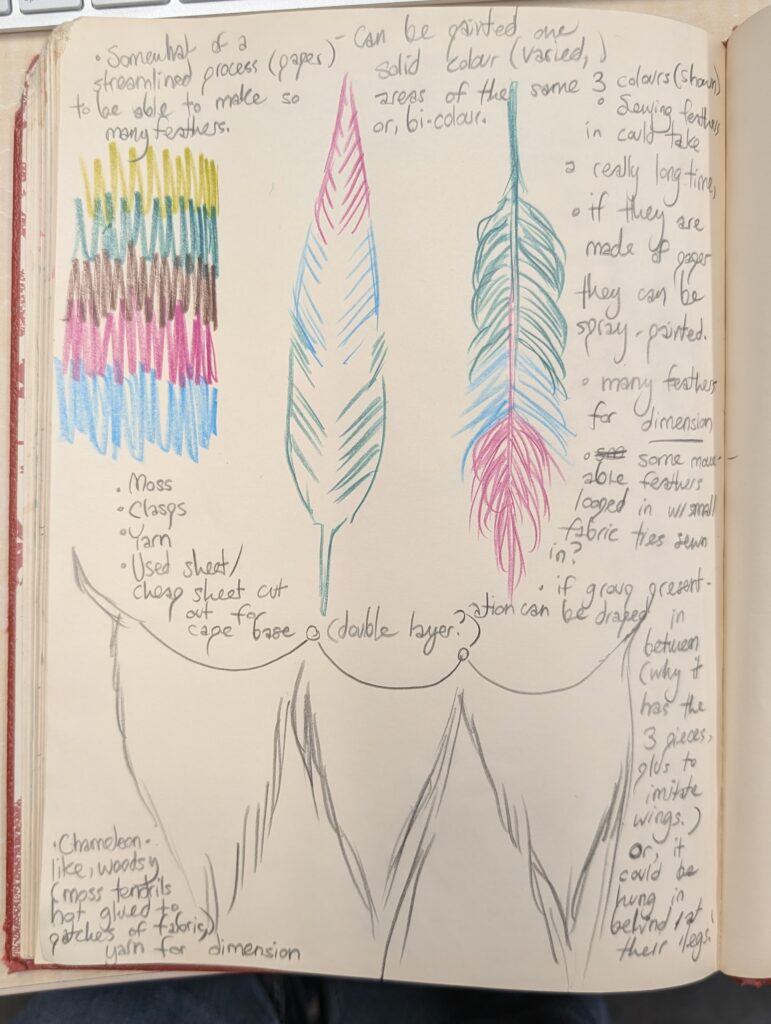
For my monster idea, I was really trying to communicate that the workshop could be a hurdle for me in getting my work done, so as early as I could, I was planning to use other materials if that was an option, but I didn’t realize at the time how important it would be to use a type of metal as the material.
My first iteration was founded around a few concepts using the drawing above.
– I would not have to buy any new materials to complete the project,
– Therefore, I could use found objects that I already had at home, including yarn, and paper that I had around the house.
– Spray paint was one of the only things I had to purchase to test the colour schemes for these photos.
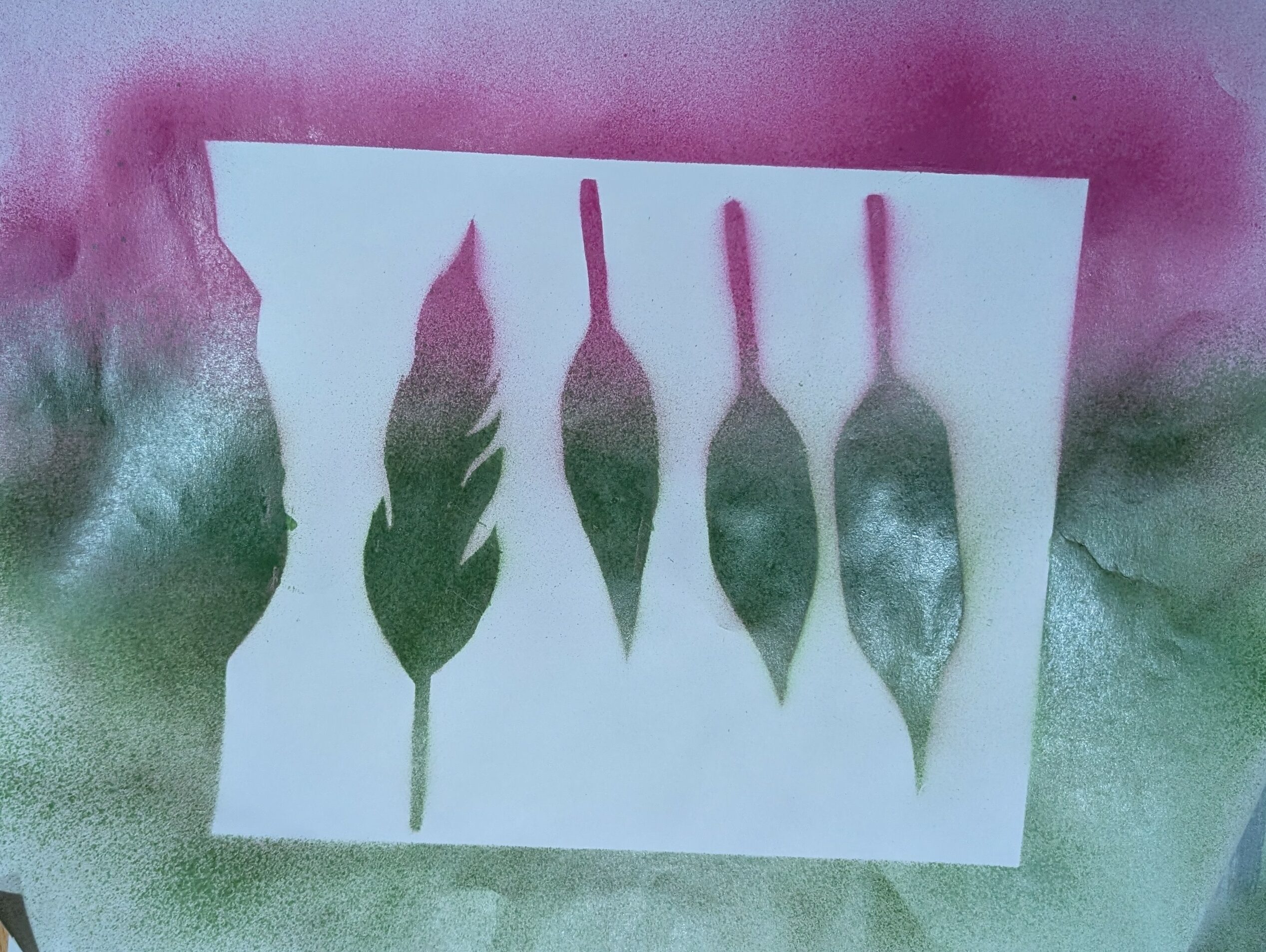
I tested a few different feather templates and the colour scheme to feel how to create natural gradients before mass painting several of the feathers.
I think that paper would’ve been a difficult, but not impossible material to work with, mainly to get the movement kind of feeling of a cloak. The type of ‘monster’ that I was thinking of was something that lived deep within a wooded or swamped area; something that is a part of nature, but sentient and which would use colours that fit this theme.
After this first stage and collaboratively exploring the ideation and materials with Ting and Carys, I was able to briefly try using shears and learning about metal working tools, but by this point of terms my hands were struggling with feelings of numbness and pain from Carpel tunnel which I haven’t had surgery for as of yet, and the shears were unfortunately more difficult to work with than regular scissors which were easier on my hands. For the metal shears, I experimented with making feathers out of sheet metal again.
Finally, we came to the resolution of creating something with aluminum foil. This was something that wouldn’t involve having to find a lot of new materials, and worked quite well in the end once the construction thankfully became second nature in its development.
Carys and Ting helped me through ideation again, and it was always going to involve feathers, but I think that my final iteration was actually better without and made more sense to me with the theme I had chosen. Before beginning construction of the final project, I wrote a poem which helped me to really figure out exactly what this monster was and what it was about, and what it came down to was that the monster had to do with feelings of inadequacy and self-image, and body image.
I have spent a lot of time this term in a Photography course, and listening to my peers who are women, talk about themselves and their body image issues, I really sympathized with the pressures that women are putting on themselves right now to fit certain media stereotypes, or even struggling with lingering eating disorders. Men are not immune to the same things either, becoming fixated on going to the gym and planning out their ‘macros’ and meals to perfection. I was really kind of shocked but again, sympathized for how much people are living in this head space about their appearance, while recognizing my own struggles with not always having the time and effort I would like for my appearance, and at times those conversations had when working together which I related most to through my gender dysphoria.
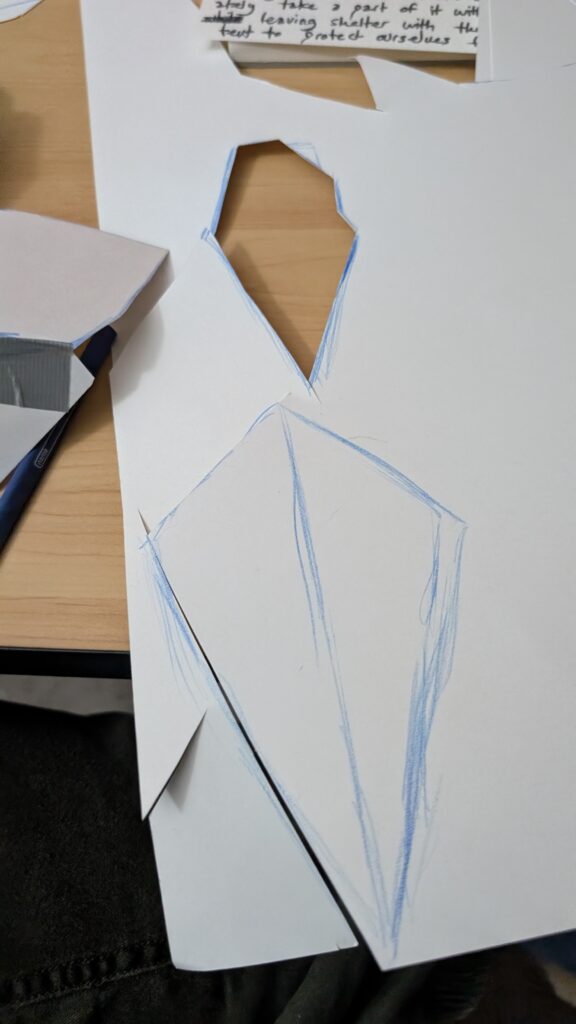
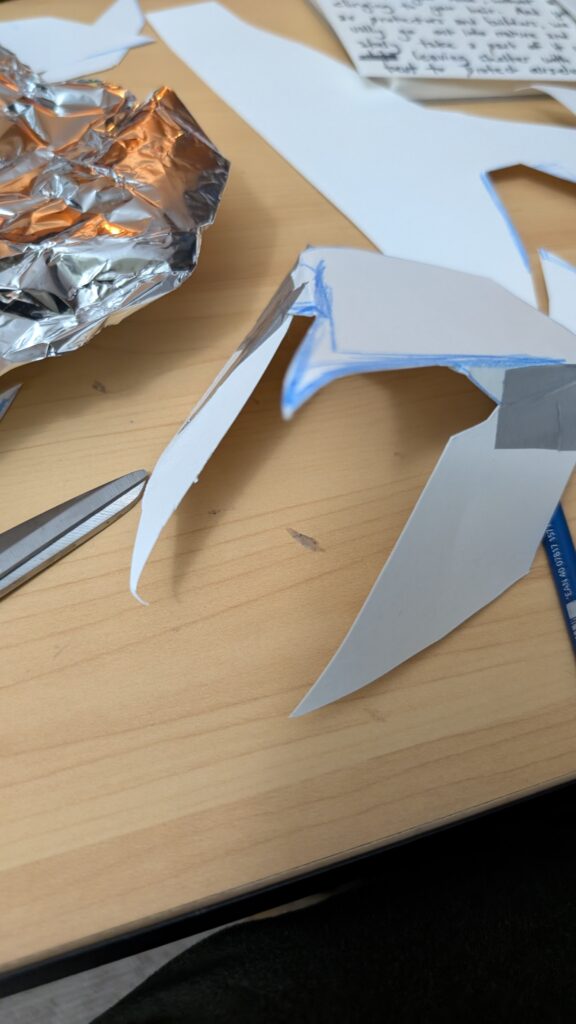
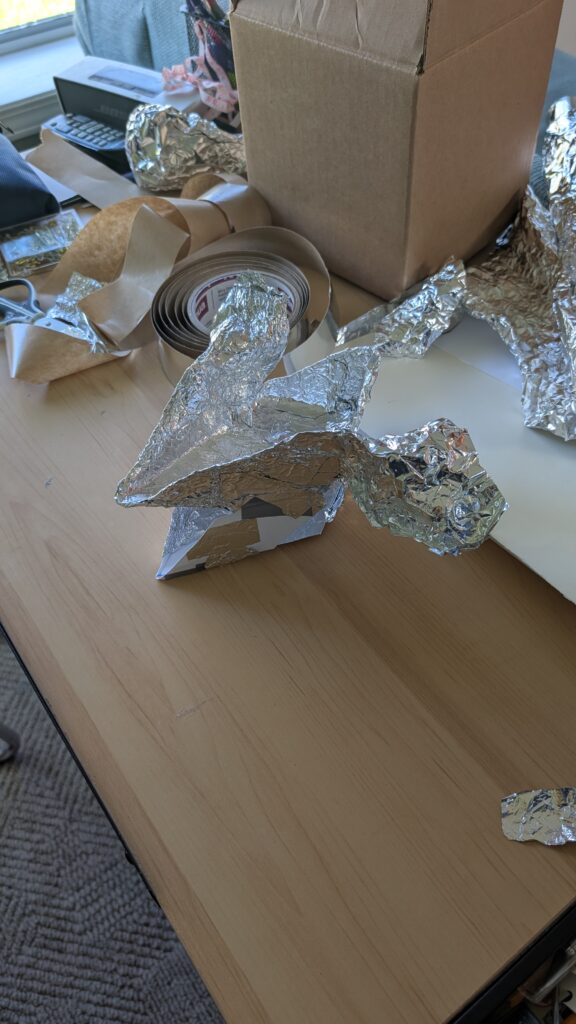
Through this project, I really feel that I briefly became an ‘architect’ of sorts. This reminds me of an intrinsic part of my project which is that, while the poem and themes tie into a sort of ‘home,’ the main home that we live in throughout our lives is our body.
I cut out shapes and mapped them out on paper like a puzzle, only drawing and constructing the next ‘puzzle pieces’ when it was able to be seen what the 3D construction required to be continued. The main concept that I was working with to construct was a beak; while I wanted to make a 3D project out of aluminum foil, I simply felt that I needed a type of template to work from, and since pieces would either need to be taped or glued together (with aluminum tape,) I felt like a template to work from was the best way to start out and see where it goes.
Because of this method, the construction was a bit trial and error to end up with pieces that fit well, but it was an experience that I enjoyed as I can safely say I have never built something in this manner before to draw something, and then immediately have it become three-dimensional before my eyes. I think the closest that I have worked with something like this was in the 3D program itself, using Meshmixer.
As I was working with laying down the pieces of foil, alternated with aluminum tape, I really looked at the work as a costume one might wear. I didn’t want any underneath or inside seams to really be showing, so that the paper would be visible underneath. I wanted it all to be covered evenly with aluminum, to speak to that ‘outer armour’ that we wear, and to look as professionally made as possible. I think that the material naturally has a mirror-like finish to it, which also I feel was a strength in this case when thinking about body image and our own perceptions of ourselves based on the outside world.
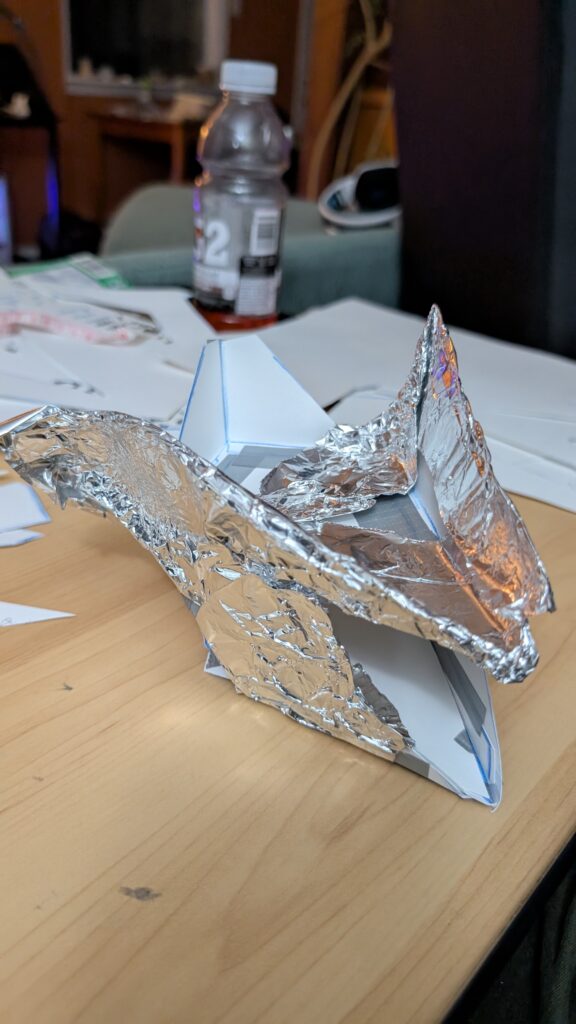
Presentation Photography
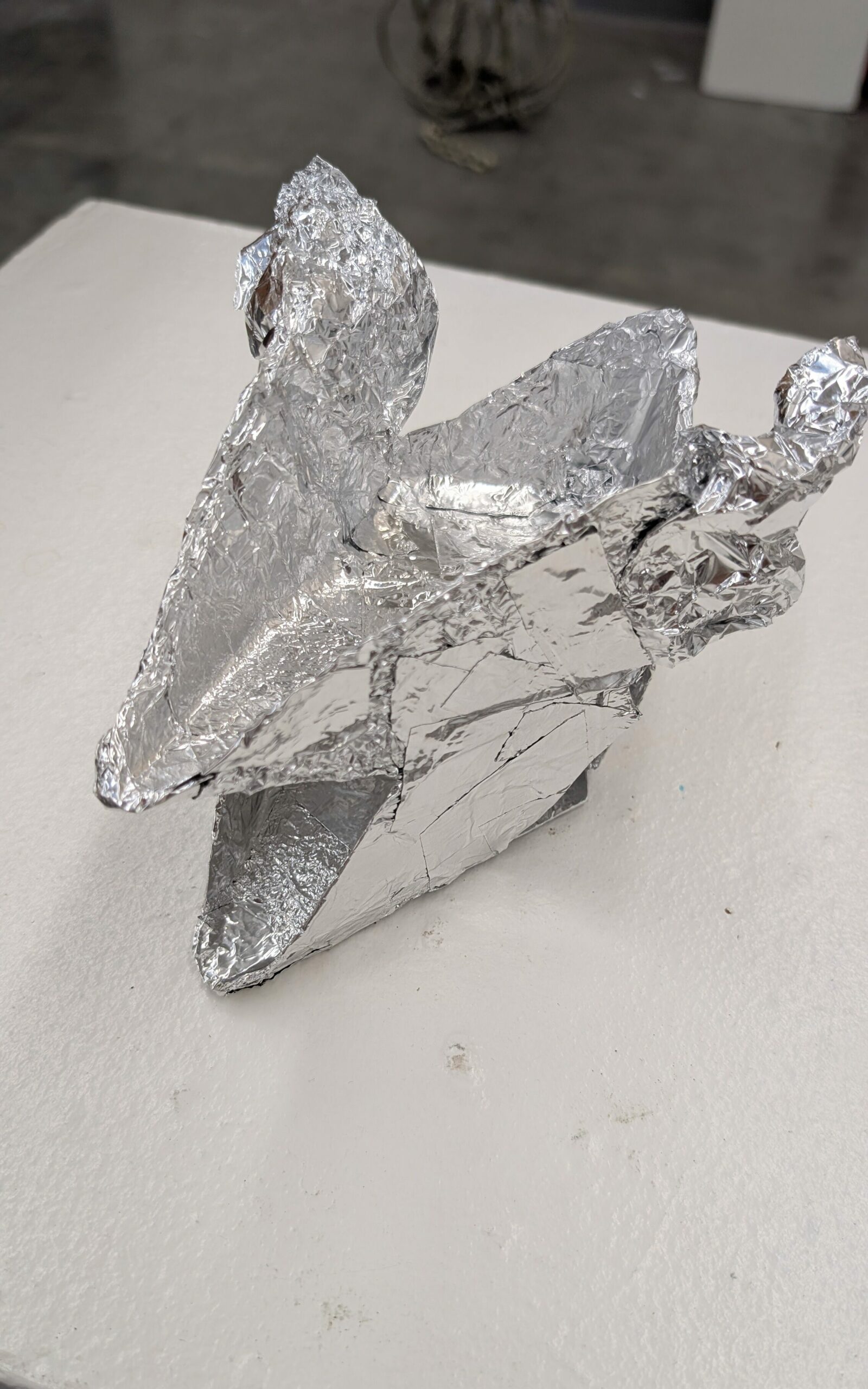
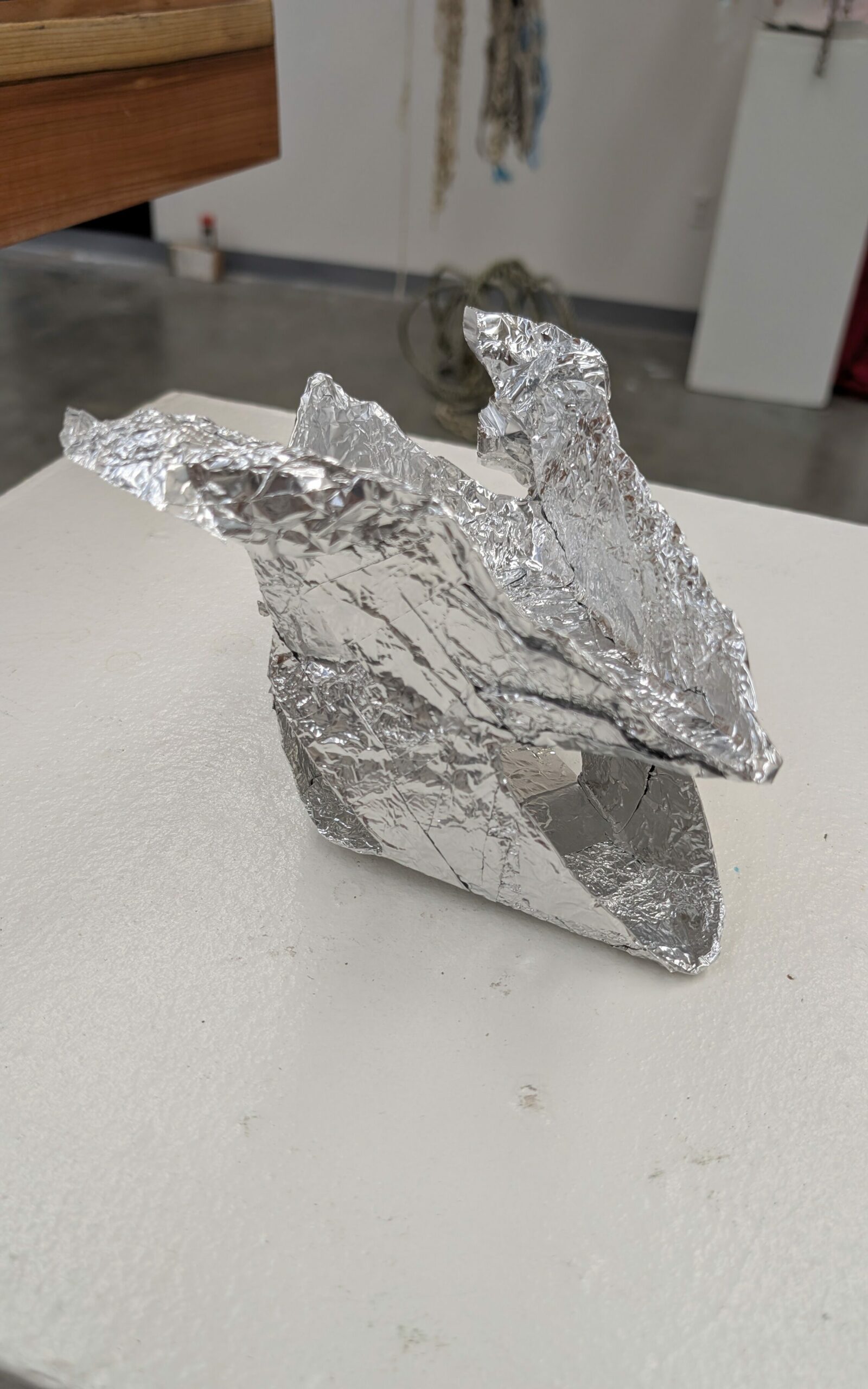
Poem for ‘Making a Monster’ Piece:
Living in nature is messy. So is being a human,
With layers we cover up & armour we put on just to survive
Our daily lives.
In nature, there is a tendency to have to be one step ahead,
Aware of the cycle of the seasons,
The feeding and hunting habits of wild creatures,
Tracking, gathering and rest and restoration.
No living creature can live or thrive without relying on a kind of pattern or routine, but moreso without some kind of
Armour or expression of the environment around us.
There is a balance struck between the vulnerability needed to stop,
To slow down,
To reflect and problem solve,
As compared to the exterior self,
The armour worn to protect our vulnerabilities,
Our fragility,
To bolster us up when we feel weak.
To step outside in nature is to be seen,
To feel
And to experience.
You cannot go into nature expecting to be unchanged by such an experience;
Without feeling the wind, without mud stuck to your shoe,
Without a scent clinging to your hair.
And yet,
As protectors and builders,
We habitually go out into nature and deliberately take a piece of it with us,
Leaving shelter with the intent to protect ourselves from the elements.
It’s undesirable to be ‘too cold’ sitting indoors with the heat on,
When we forget to wear our socks or put a blanket over us for added warmth.
But have you ever felt more refreshed than when you’re standing on a beach,
Fettered by freezing wind,
With rain that stings like seaspray on your cheeks?
We pick up a stone,
We take it home,
It becomes ours.
But, we rarely call ourselves the Earth when we go out into it.
We look in the mirror,
And maybe we greet ourselves that day,
Or maybe we are uncomfortable with the unkempt,
The tired,
The agitated,
The lack of armour,
Or our faded youth.
And other people, who go out in their armour, their crocheted sweaters or their long earrings,
Or their dark sunglasses,
They look at your unkempt,
Defrosted,
Transparent self,
And they look at your armour and they see them both in little ways.
They see your lip gloss, the way you tied your hair back so that it stays out of your eyes while you work –
A commitment.
And they don’t think twice about it. They hardly notice.
They might say something,
Compliment you or stick a label on, but underneath,
They don’t just look at you – they don’t look at you discerningly in your fragility,
Even when you feel naked under your armour in a vulnerable moment.
And they might also judge you, a little, like a squirrel might judge another squirrel drawing closer to its favourite tree.
Mostly, they are simply with you,
And they go out into nature,
They’ve picked up a stone and they take that stone home with them as a memory,
A memory with you in it,
That “there you were,” sitting underneath it all along.
Critique Photos
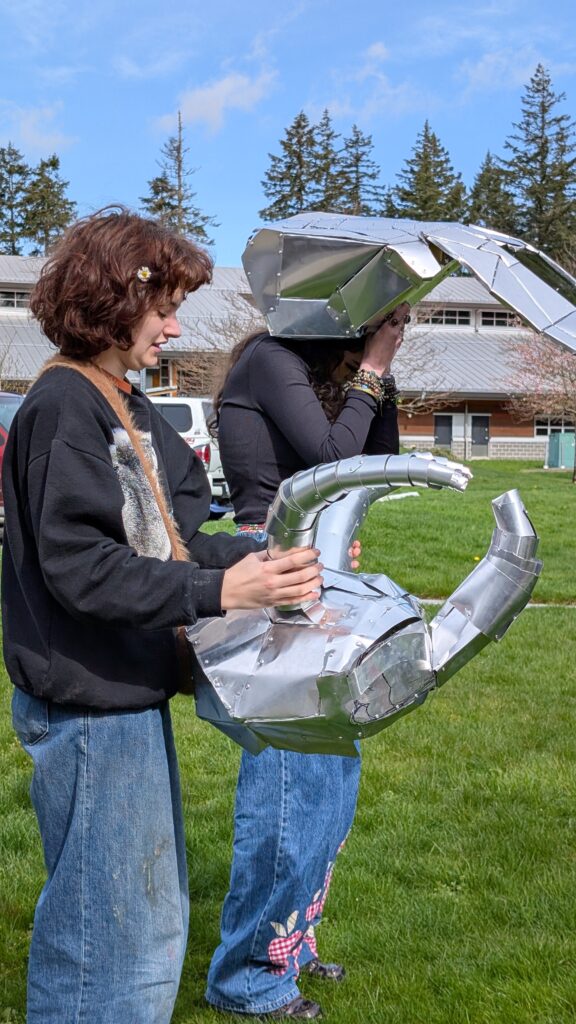

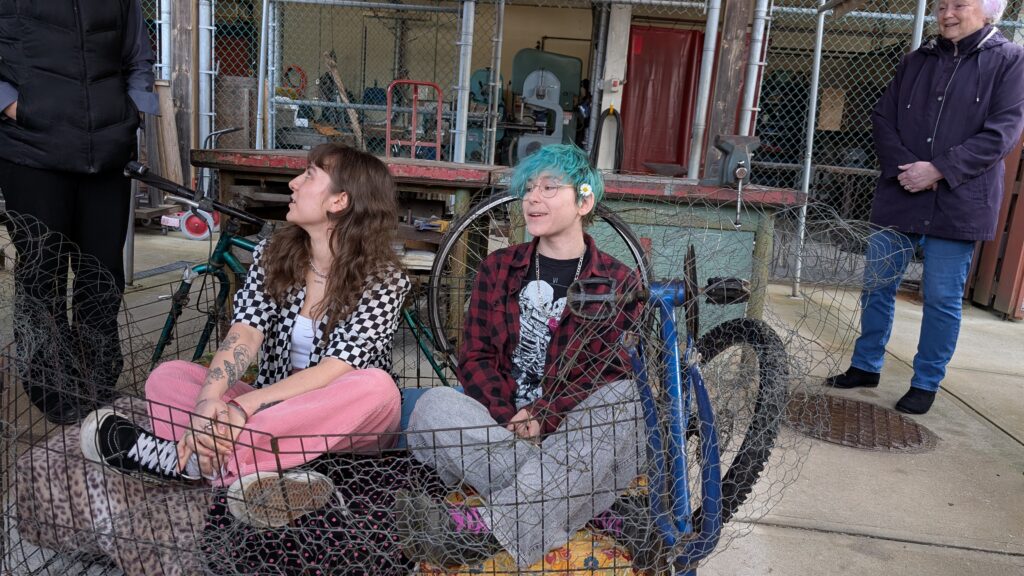
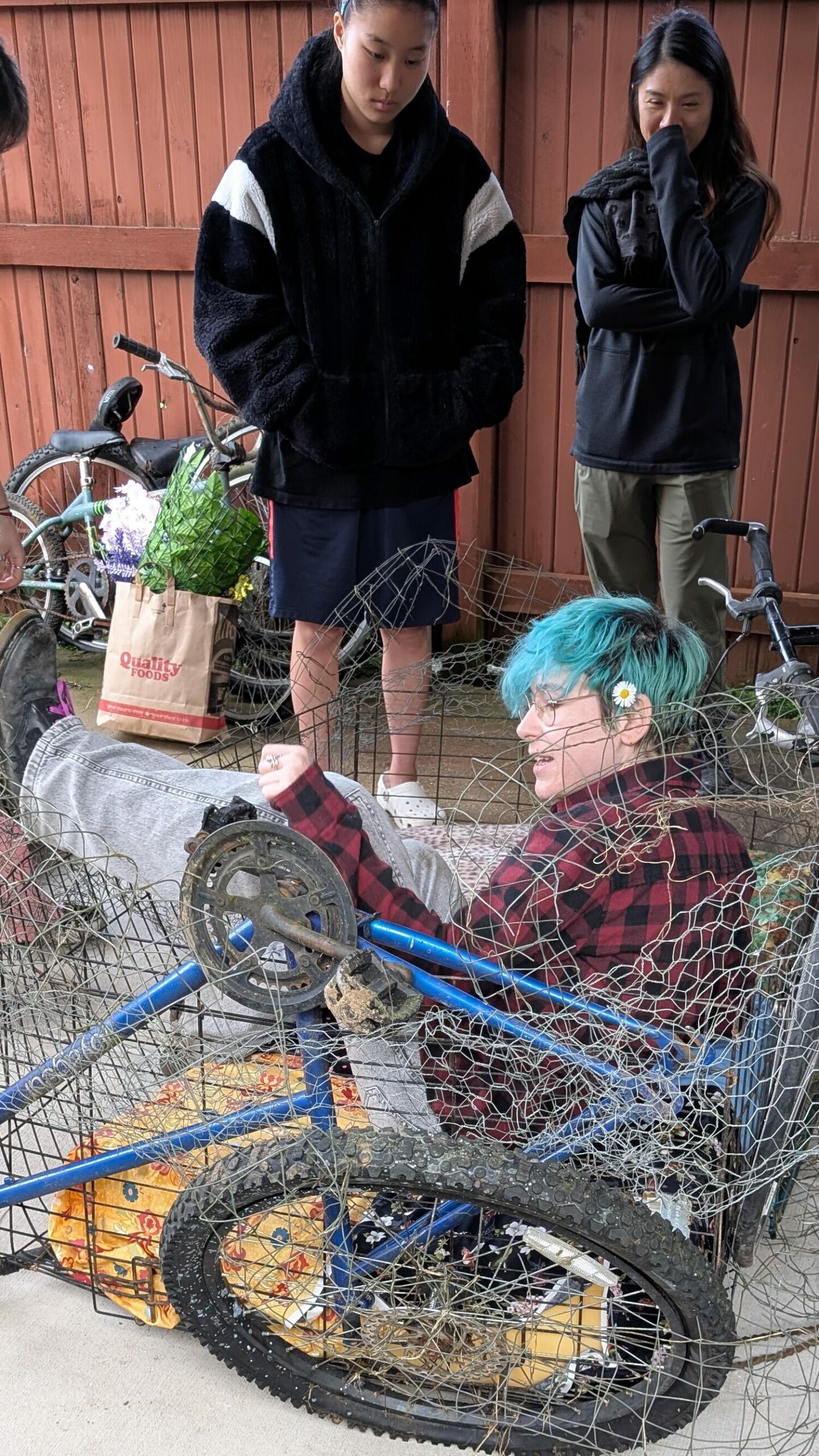
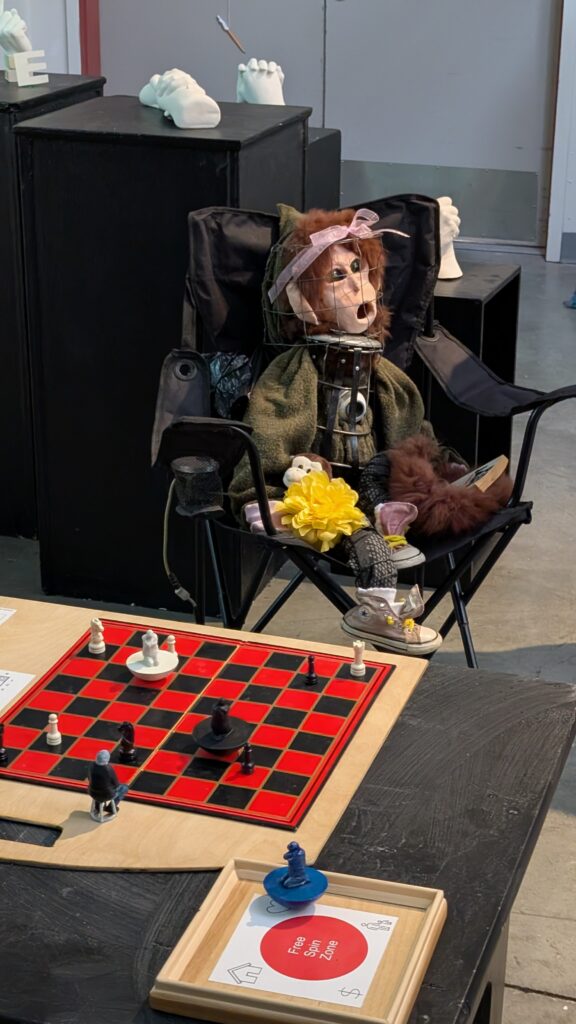
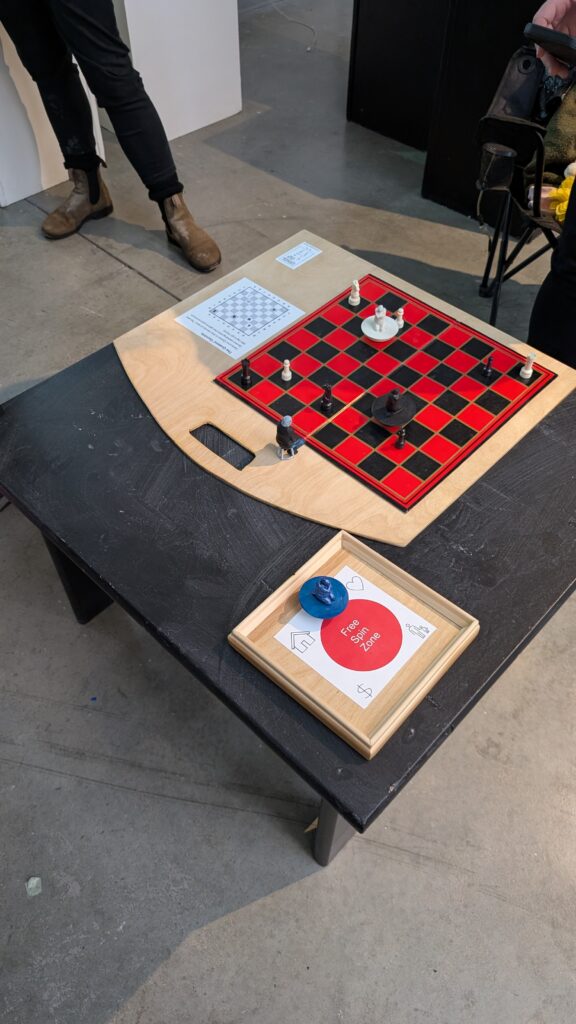
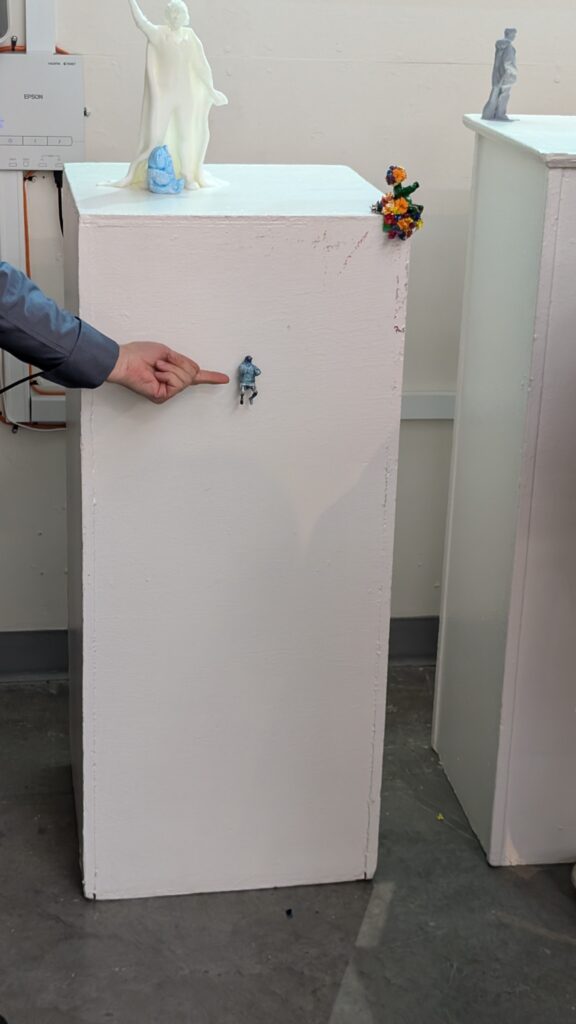
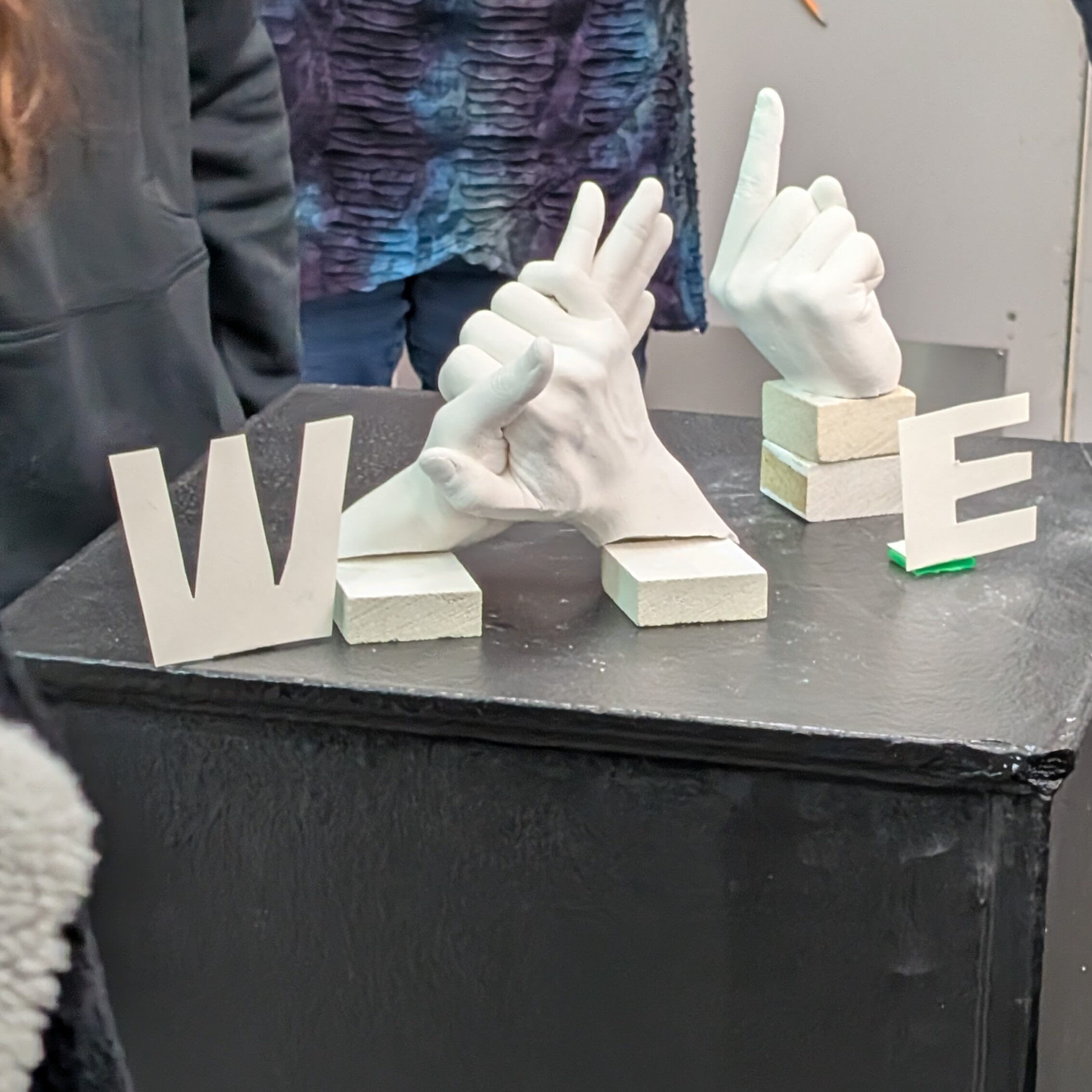
Peer Reflection
Nim and Gabriella created an innovative three-dimensional space using tires, wire, household objects, and various belongings that they used in collaboration for their assignment. The scale of the piece led us to have in-class conversations about the meaning behind the work, and how it relates to issues that people are facing in modern times with housing issues and displacement. In a way, it felt as if it could be about the environments that we grow up in (as the piece had themes of childhood,) as well as collecting and scavenging to continue to add to a type of ‘nest.’
Another piece that I really enjoyed that I think was made by Yewon (and I forget who her partner was,) was the hand holding cast. This piece felt very important to me in highlighting how much people who rely on ASL would appreciate if more people looked at the language as similar to other spoken languages in adapting to learn them. If the language were more commonly used, I feel like the world would be a much more vibrant and interactive place for everyone. During the critique, we were able to discern how certain hand-holding pieces really portrayed the tension that one hand may have been holding in the moment, and how well hands can imply emotion, gesture, movement and the tension of a moment from the way that the casting took place.
FIN 131 Unit 1
Research Assignment – MULTIPLES, FAMILIARS, HYBRIDS, CASTING
Uncomfortable Art
- What makes us uncomfortable about artwork? The unexpected, topics that hit close to home. Horror, preconceived notions about the purpose of commonplace objects. ‘Funniness’ or strangeness can be uncomfortable.
- My initial reactions to some of the contemporary works on (the uncomfortable.com) are that, it’s not necessarily a kind of artwork I would’ve been drawn to conceptually. I feel like in terms of conceptual modern art, some of my favourites to learn about revolved around performance art and human nature in responding.
- In correlation to that, these artworks feel like an experiment in how we respond in human nature and playing with the response of feeling uncomfortable. When people view the artwork, do they stop to reflect on how they feel, or do they simply feel uncomfortable and move on to the next artwork?
- It is also interesting to make artwork which considers discomfort in a culture where we may experience a lot of sensory overstimulation, even sometimes in our homes and our choices around that. Screens, loud noises, people coming and going, living with multiple roommates, or traffic and deadlines.
Cris Tufiño
Dancing at the End of the World 2019
- First Solo Show in Mexico
- Materials both solid & incorporeal
- Collaboration with the School of Smell, Fragrances of the Caribbean (nostalgic & almost funerary by the school of smell)
- What I like about this artwork is that it feels as if viewing it brings a sense of joy and humour. I almost forgot that it was monochromatic looking at it because of the play of light and shadow where it is displayed.
- The spikes logically seem like they would come from the shoes, but are attached to the feet instead like thorns or tentacles. Toes are overgrown over the edge, and this made me feel as though someone ‘wearing’ these would have a type of awkward gait. It has adopted characteristics or a sense of character.
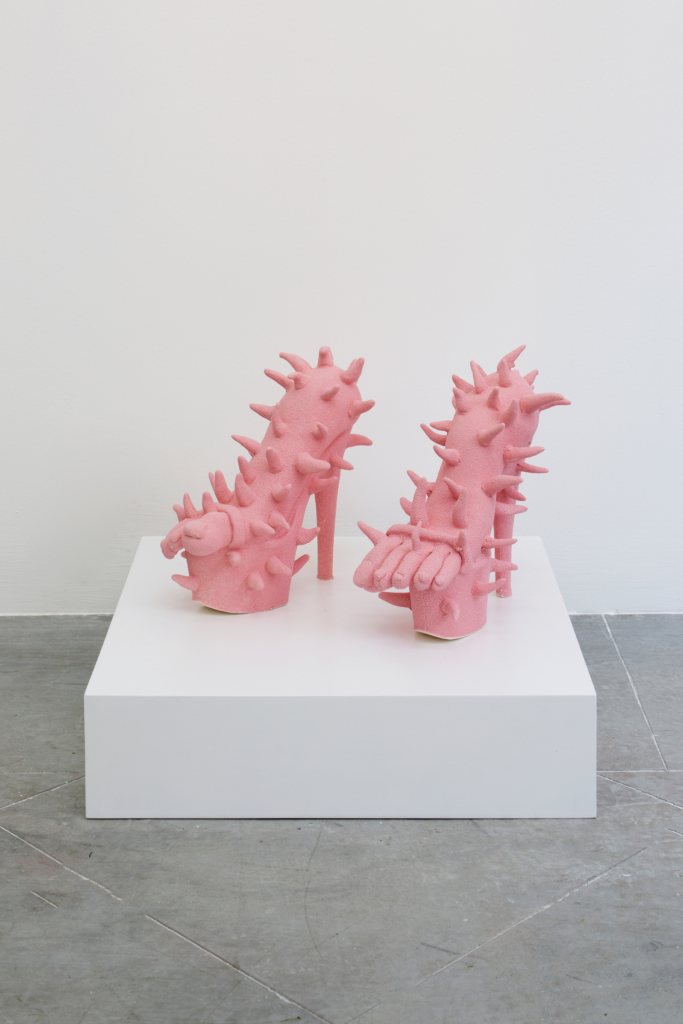
- Although I can only imagine or speculate about the meaning behind the pieces, some of my impressions are a sort of transience between these ‘material’ realms of artificial and organic, and exploring this theme through different pieces within the collection.
- The arm feels like a dismantling or hybrid of organic forms that we see in nature, but also possibly something more technological like a keyboard. The two parts feel ‘infused’ in a way which makes the other abstracted and not entirely recognizable.

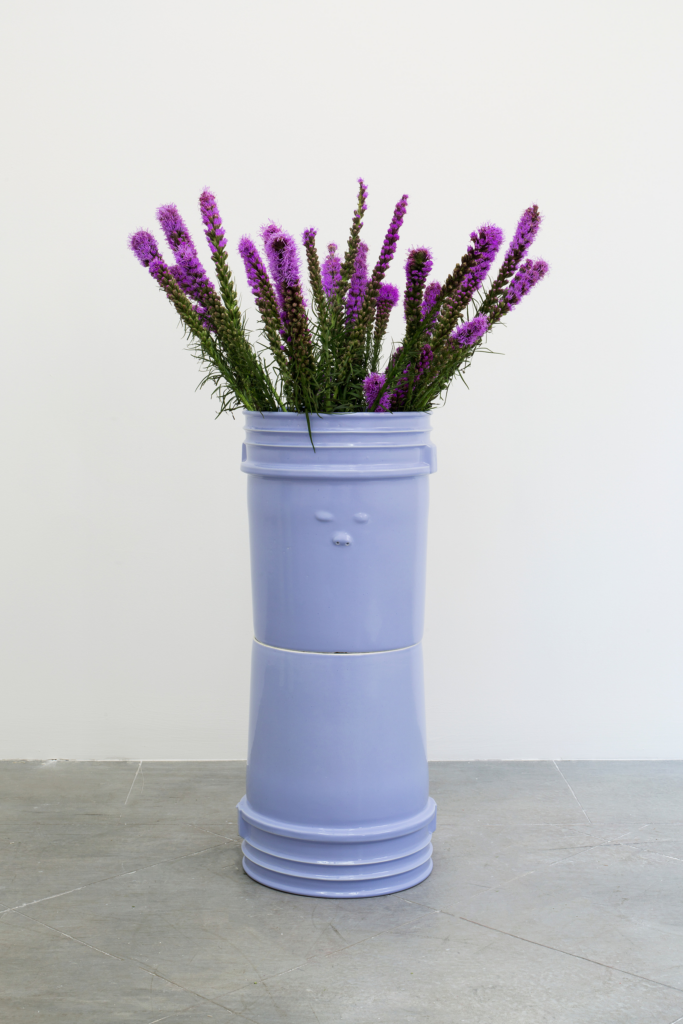
- Within the collection and looking at it together, I feel as though colour and material choices were very deliberate or carefully considered; instead of comparing paint swatches, choosing with organics that are available or organics that have a specific meaning to us our perhaps cultural significance, or none at all.
- The face on the bucket above feels intentional, as does the intentional creation of perhaps a casted object we would normally find for $5 in a hardware store made into art instead; customized colour – finding a new home, some intention in which it still holds, but not for an industrial purpose or something that is a chore.
- The reflection in the design is interesting to me because it makes me feel as if, I get an impression from all of these items together as a garden, but it’s missing something like a lake or a pond that the bucket is sitting in, and it’s not actually a bucket we are staring at, but the water.

- When I look at the collection together, I see strange and unexpected items and also customized casts which seem to repurpose something that is ‘supposed’ to be common place. The hands felt strange and isolated at first (as if that was the artist intention,) but looking at it again after having thought about it more I feel like they were a choice to include almost without a significant afterthought, as if the collection is about a process of “yes, this is industrial,” and “it’s not industrial at all, but it was put here like everything else.”
If it is a garden, it raises questions about ‘why’ of the dismembered head objects and the ‘why’ of the organic shapes and textures of the (pink) aquatic-looking shape in the back, which again has transcended the other creations by its nature alone. - So, in a sense, I feel included are items that stretch the possibilities of reality, objects which should be plastic and industrial, but aren’t, organic forms which are clearly not industrial by nature, and objects which again appear as organic shapes and forms, but aren’t organic, living, breathing forms either. For each object is a varied degree of appearing ‘finished,’ without hyper realism being shoved down anyone’s throats because it is realism and isn’t at the same time.
- This collection invites me to see something different, because I feel as if I’m trying to put together the puzzle pieces of someone else’s daydream. I feel as if I’m being invited to a conversation about what someone else’s life feels like. I feel invited to ask them questions about it and to get to know them. I don’t feel so much invited to a garden that they personally work in day in and day out, but into their dreamscape version of a garden. I feel as though I am experiencing their love, insecurity, feelings towards themselves and even their self-image. I sense a strange amount of cleanness and tidiness for something which otherwise might sometimes feel unruly or out of control. Gardens feel like a place that have seasons; a season where gardeners work, plan and prune, and also periods in which they may simply be enjoyed, or stared at. In this instance, the ‘garden’ feels more lived-in somehow, and like it is a part of a person’s life and being rather than an after-thought, a task, an errand, a chore.
Research on Dancing at the End of the World 2019
“Right behind her, in the video Dear Pilar, the artist led us through her memories, telling us of her late grandma, the ruins of a nineteenth-century leper colony on Isla de Cabras at the mouth of San Juan Bay in her native Puerto Rico, her travels to Tokyo and Paris when she was younger. She spoke over images she either created or pulled from the internet, explaining her interest in certain enigmatic feminine figures- sphinxes and models—in a tender whisper that evoked Lana del Rey singing the songs of the end of our world, an end that is always coming, for someone, somewhere. The women Tufiño depicts have identities so fluid they spill over into nonhuman territory, surrounded by flowers, by
scents, by furry creatures. They evoke disembodiment, disassociation, virtuality—
techniques through which humans have always sought to transcend the banality of our
material bodies to communicate with whatever is out there, beyond us.”
(Gaby Cepeda) – https://www.cristinatufino.com/4004336-press
- Reflection for Research:
Can we instigate an experimental approach to 3D art and design, inspired by aspects of familiar objects, as a means of considering how we live our lives?
I think that Cristina Tufiño experimented with an approach to her 3D art in terms of retrieving pieces of herself through memory, grief, loss and also out of the love of a place which has experienced loss and destruction. I think one of the most poignant ways that she displays this loss using video and sound which connects in a type of 3D performance art is the ritual performed in drilling a hole through a coconut, taken in hand, and the space made for the sound of the construction/destruction in the act of doing so.
Her themes connect to feminism, being a woman, and the women in her life – her raw memories of attachment to aesthetics, fashion, and identifying with the sphinx sculptures in France. She connects to the research which matters to her.
FIN 130 Unit 3
Research Assignment
(Scroll Down if you wish to watch the accompanying videos.)
Unit-3-Research-Assignment-Jack-MUnit 3 Assignment
Week 1

- Most modeling was accomplished by adding a plane, duplicating, and adjusting sizes of objects, and changing positioning with edit > transform. I did experiment with various brushes as well but I didn’t really enjoy the look of them even after changing and adjusting sizes, perhaps because the object is based upon glass and it has such a naturally smooth and thin surface, so I stuck to editing the original shapes as much as possible, and then duplicating them.
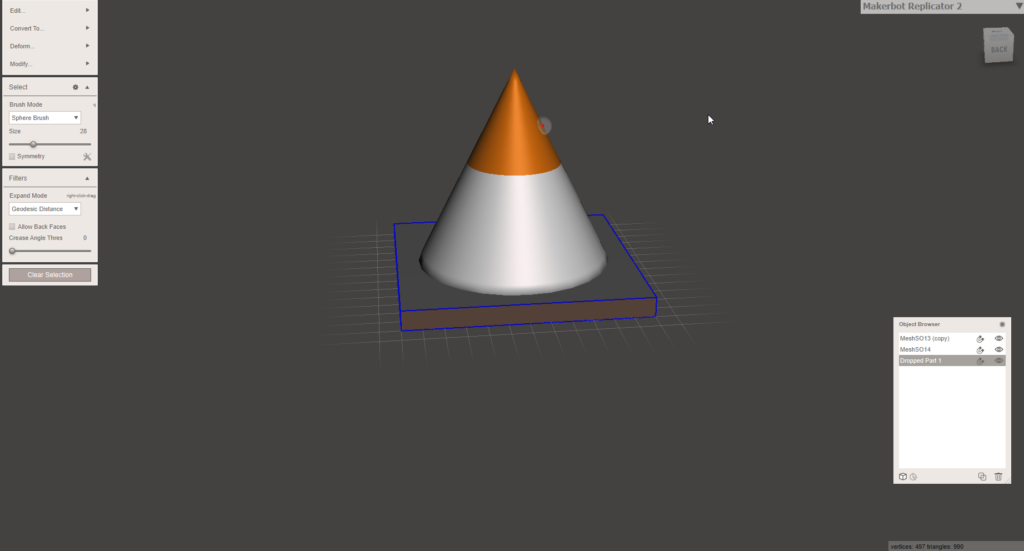
- Basic shaped were used in the original construction. I used the ‘smooth’ tool x 3 on the top of the cone area (I was starting to make my hourglass,) so that this orange selected area narrowed out towards its peak and developed the signature hourglass shape.
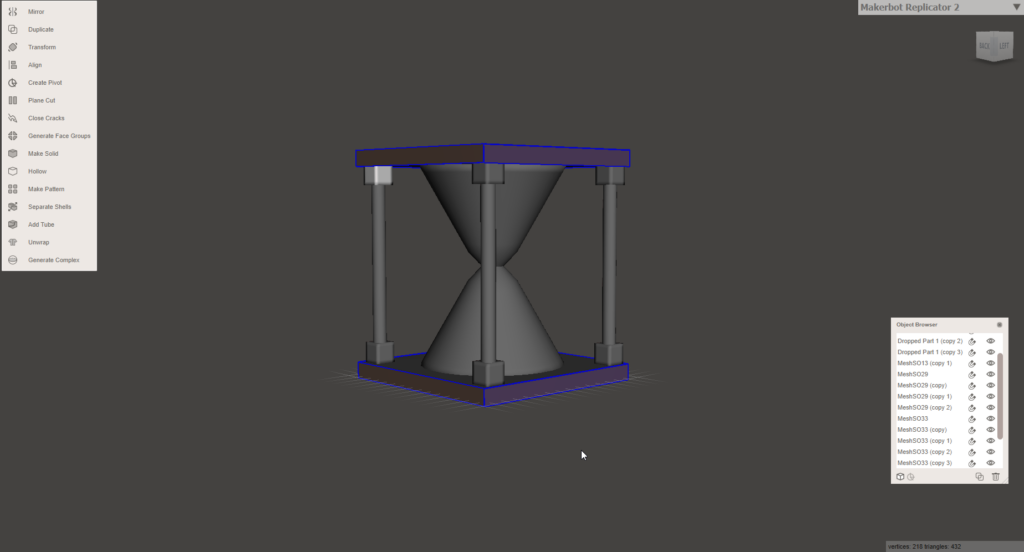
I knew that the area met in the middle would be too narrow if based in reality, so I selected and removed the smallest peak and continued to adjust the model to fit together in a symmetrical form.
Small squares were placed onto the matrix, duplicated and positioned, as well as the columns.
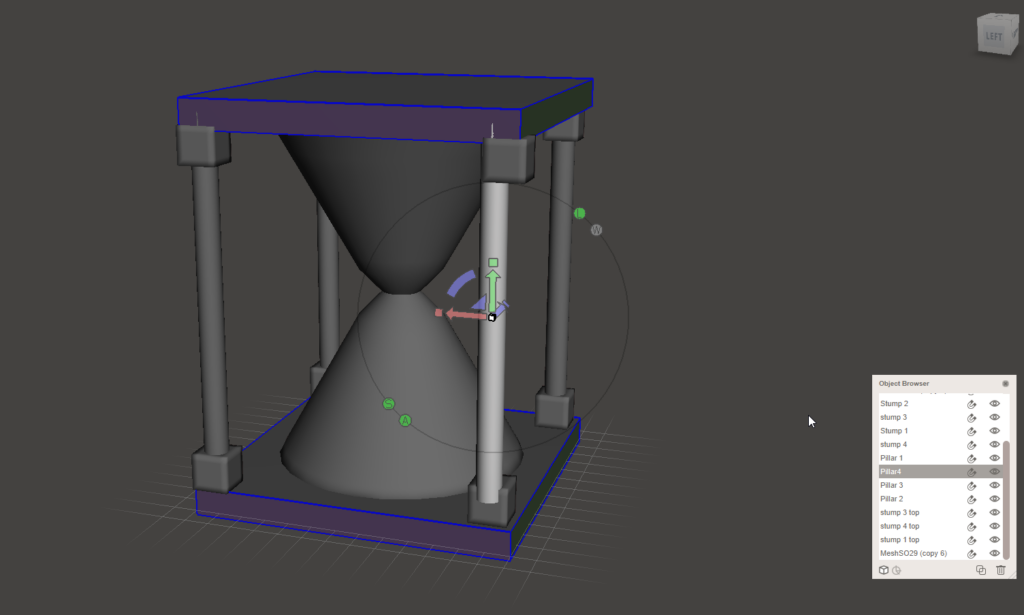
When I was finished the original design, I decided that it looked too bulky in comparison to a real hourglass, which are usually taller than they are wide, so I tightened up and adjusted all of the pillar areas by first shrinking the square base and ceiling of the object, and then readjusting the pillars and squares to fit the design.
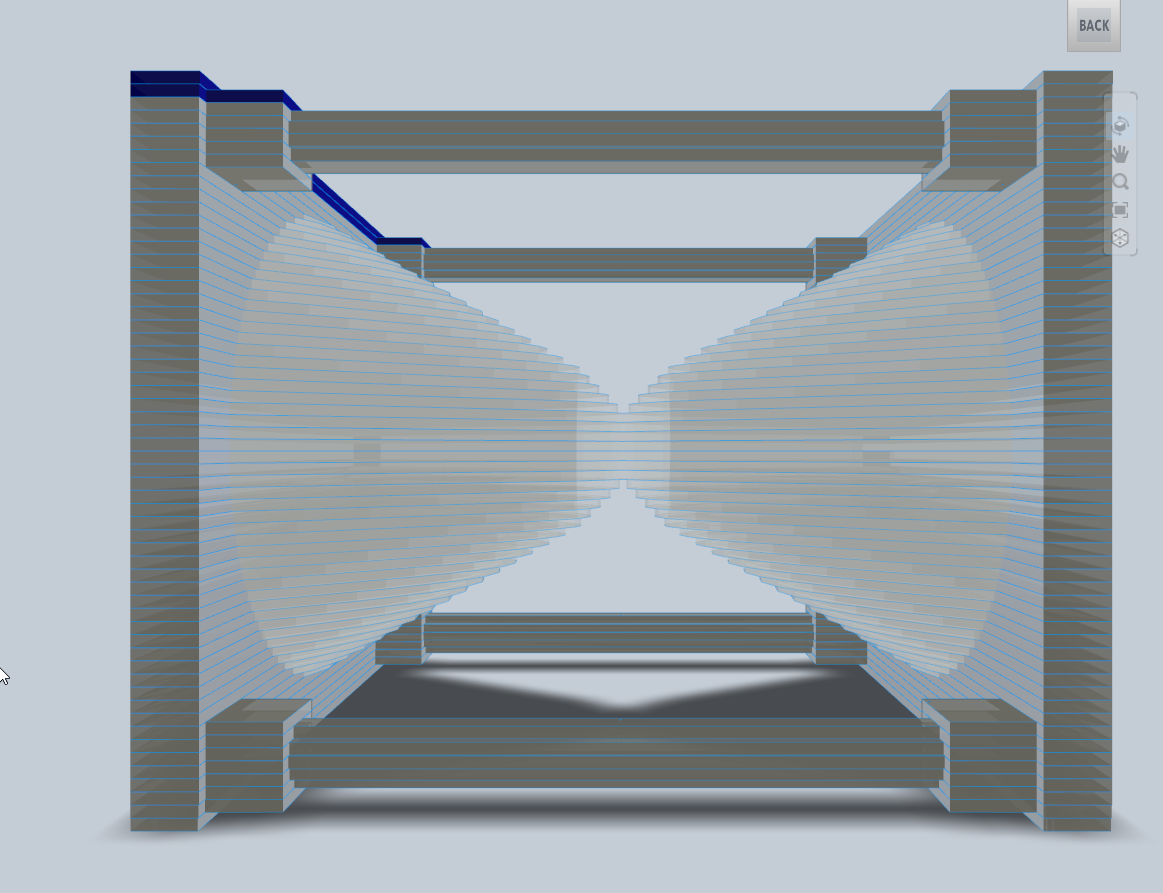
FIN 130 Unit 2
Paper Bag Assignment
Week of Oct.18
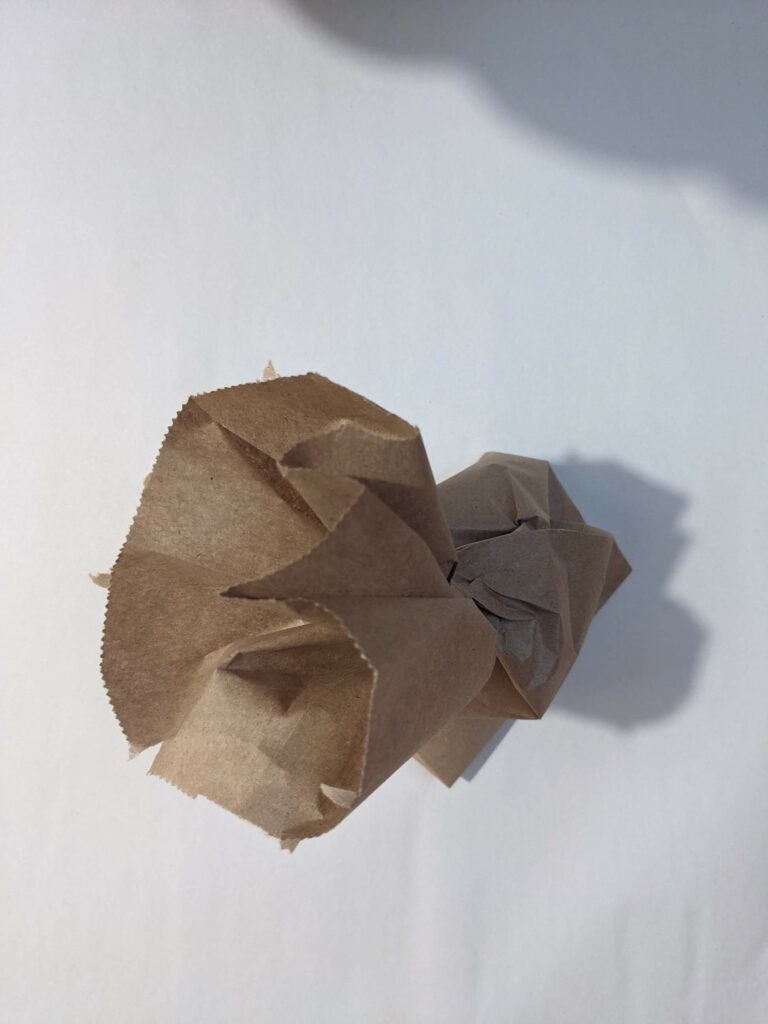
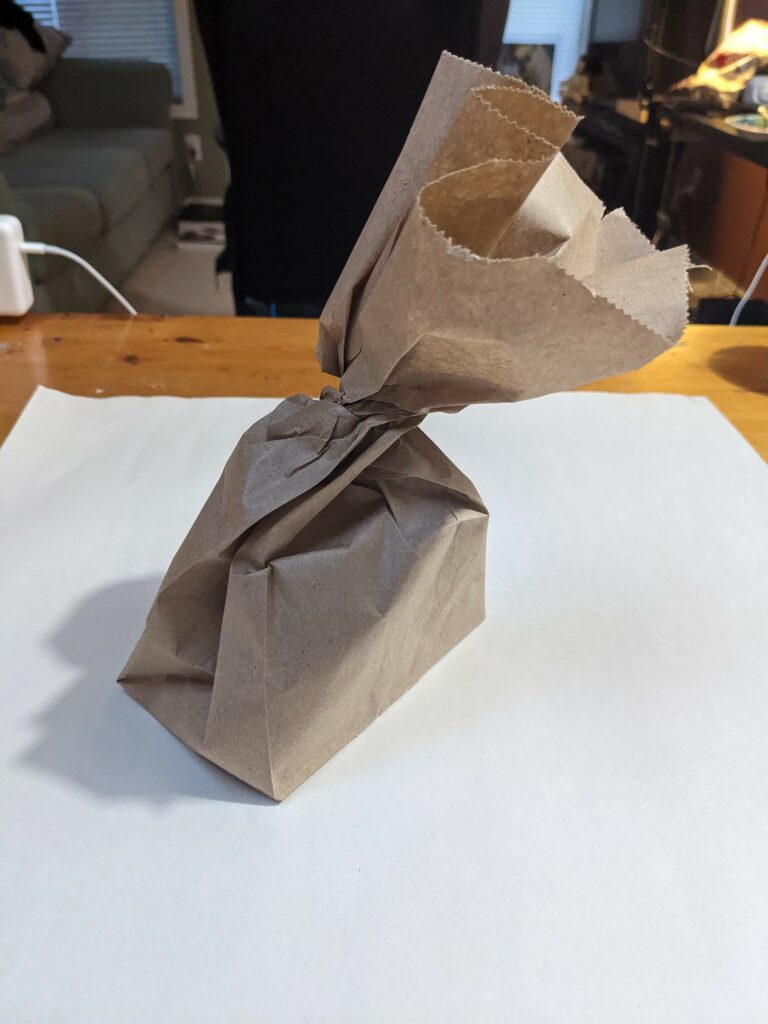

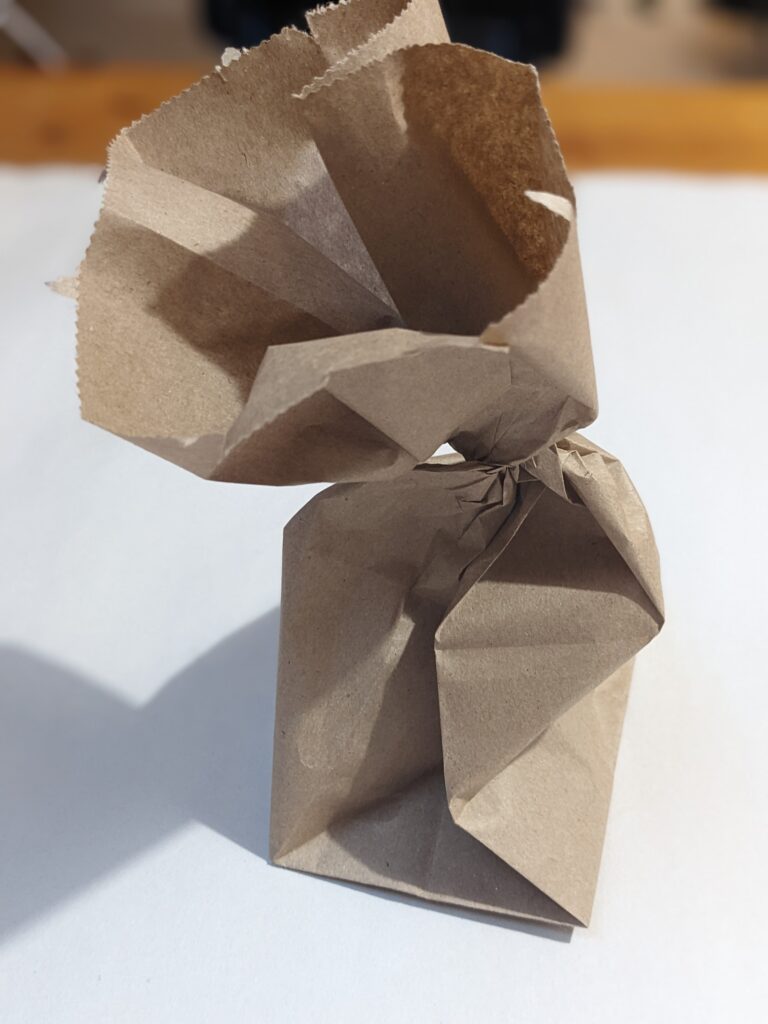
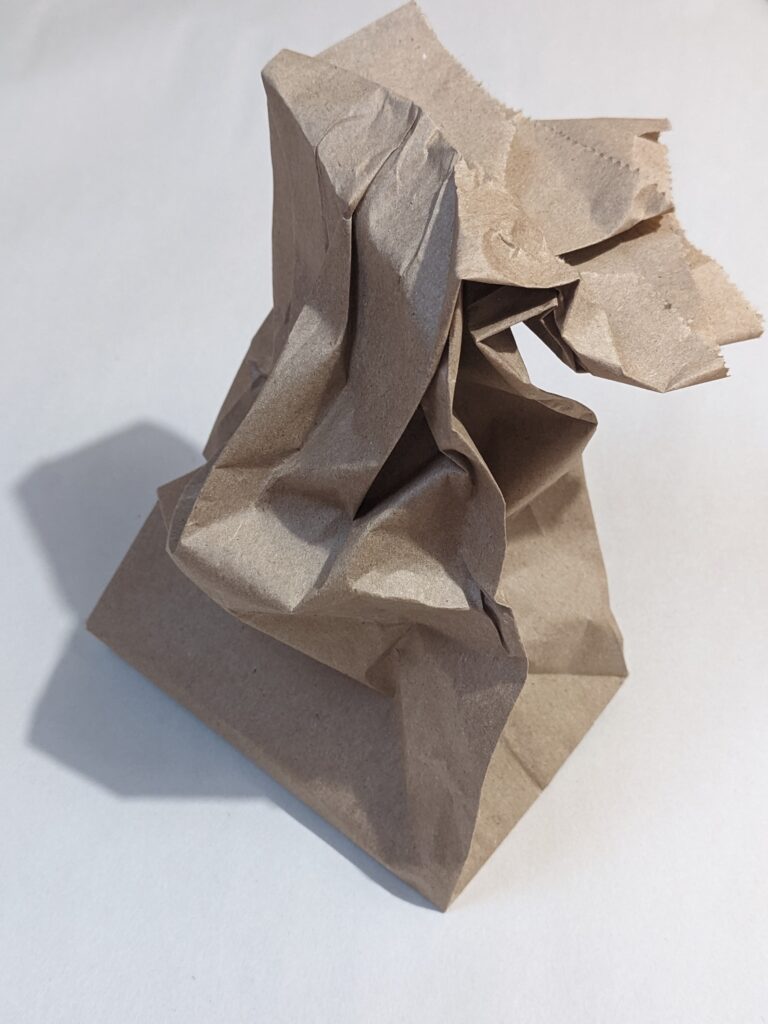
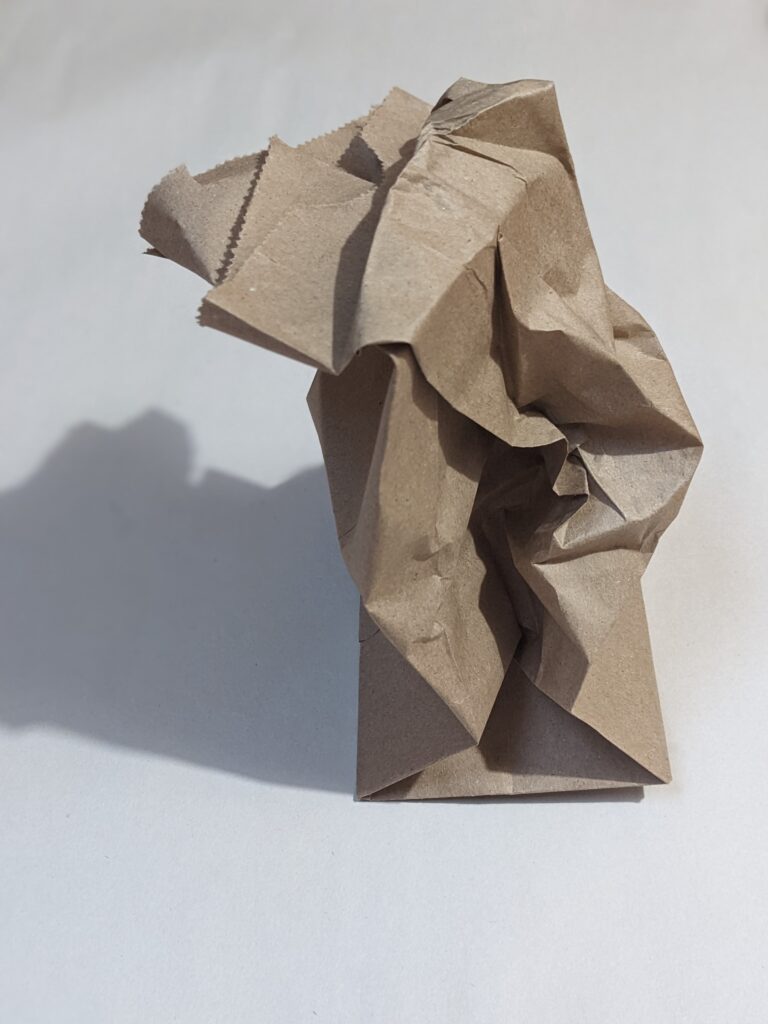
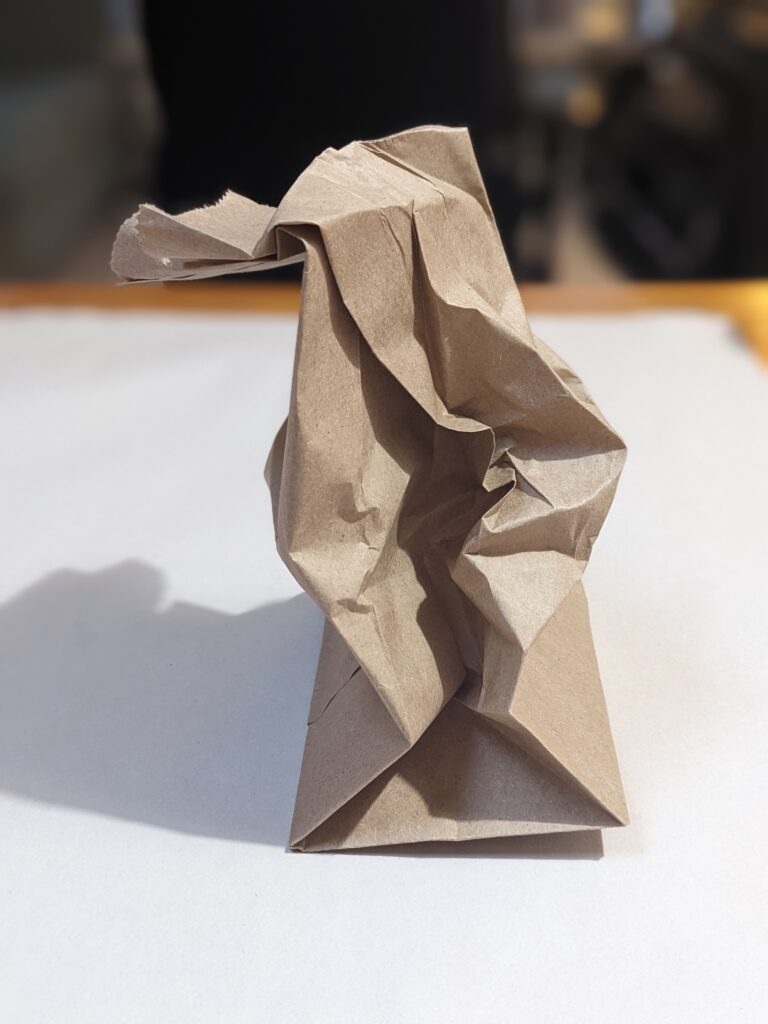

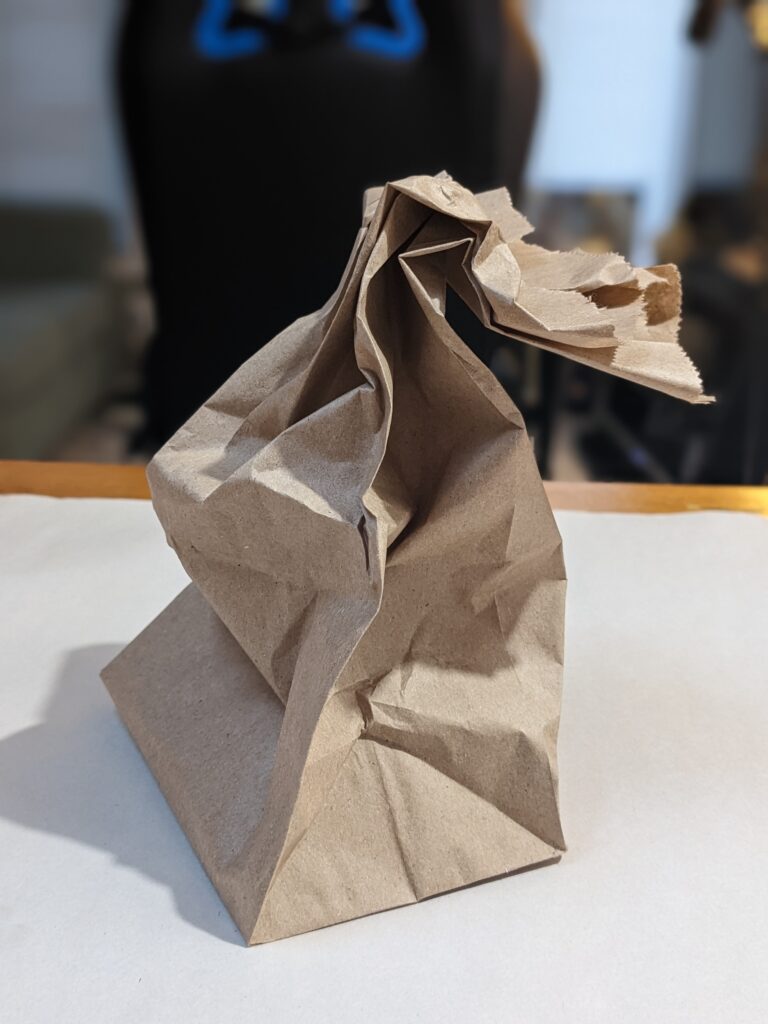
- I find this practice very similar to practicing drawing drapery in a way – the shapes and ‘vectors’ may be more triangular as a result on these paper bags, but you still get a sense of the man-made, of something that isn’t entirely organic – and maybe even looks wearable sometimes in the way that we know this is a functional, potentially, once-upon-a-time ‘every-day’ item.
- I thought about how hands might twist, or even after finding an odd shape on the second one, how human hands fold, repeatedly, at the top of such objects.
Process
- Found that slightly more water in the ratio allowed me to work a bit longer. It took me probably 6 or 7 mixed batches to get all of the wire completely covered (at which point I was almost out of plaster.)
- Working with the material was fairly relaxing, but of course there was time constraint to think about of the plaster drying. I tried to get in as many of the small grooves as possible, I’m glad I kept the gesture relatively where it was at because it created most of the challenge of applying the bandages.
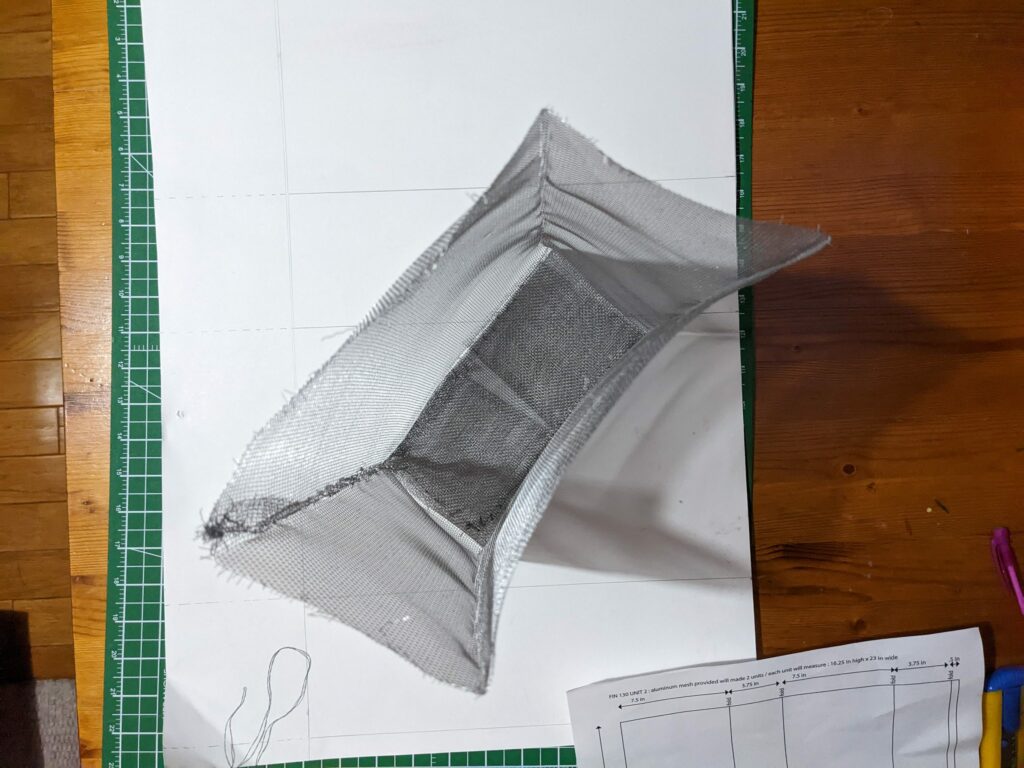
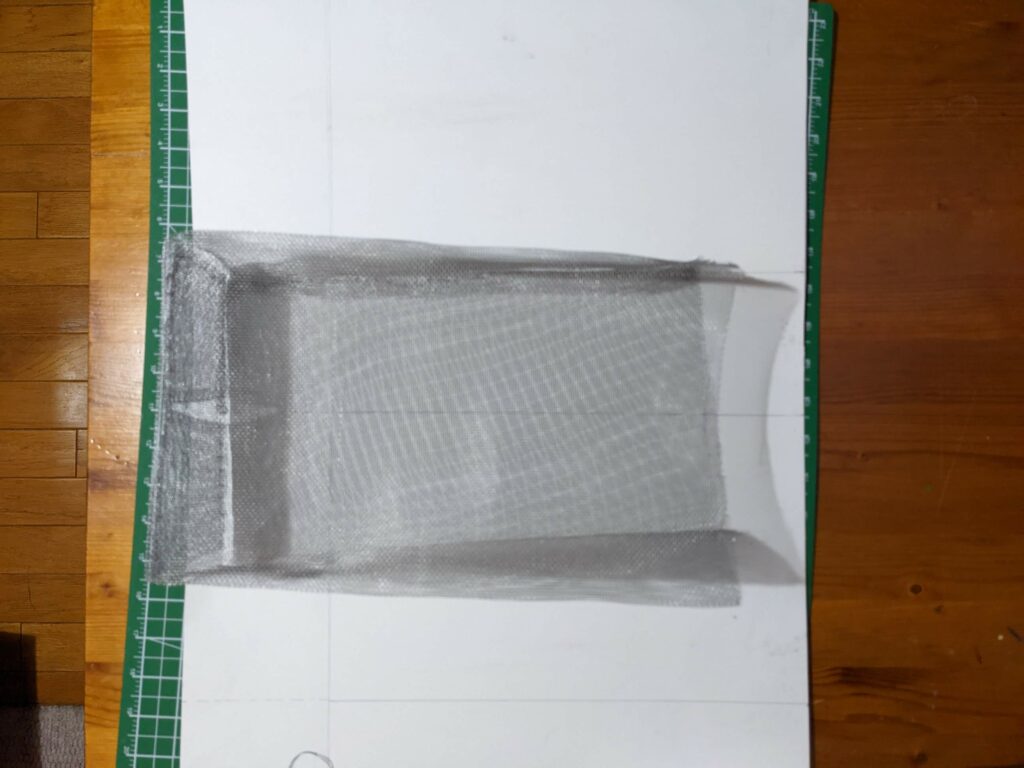
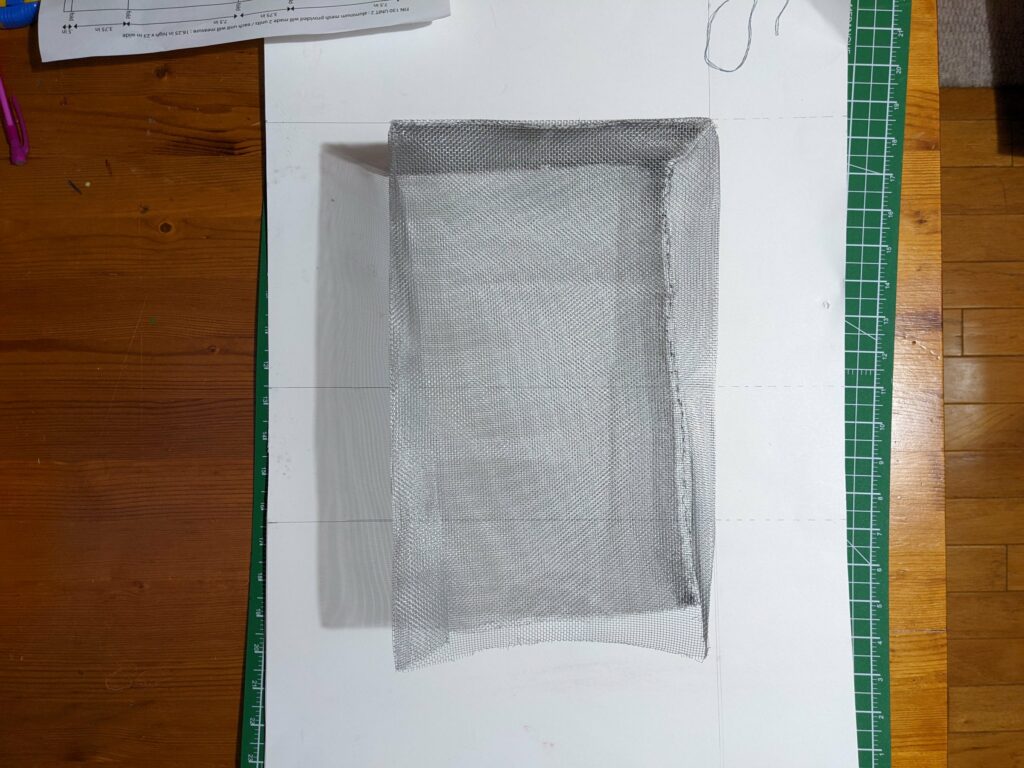
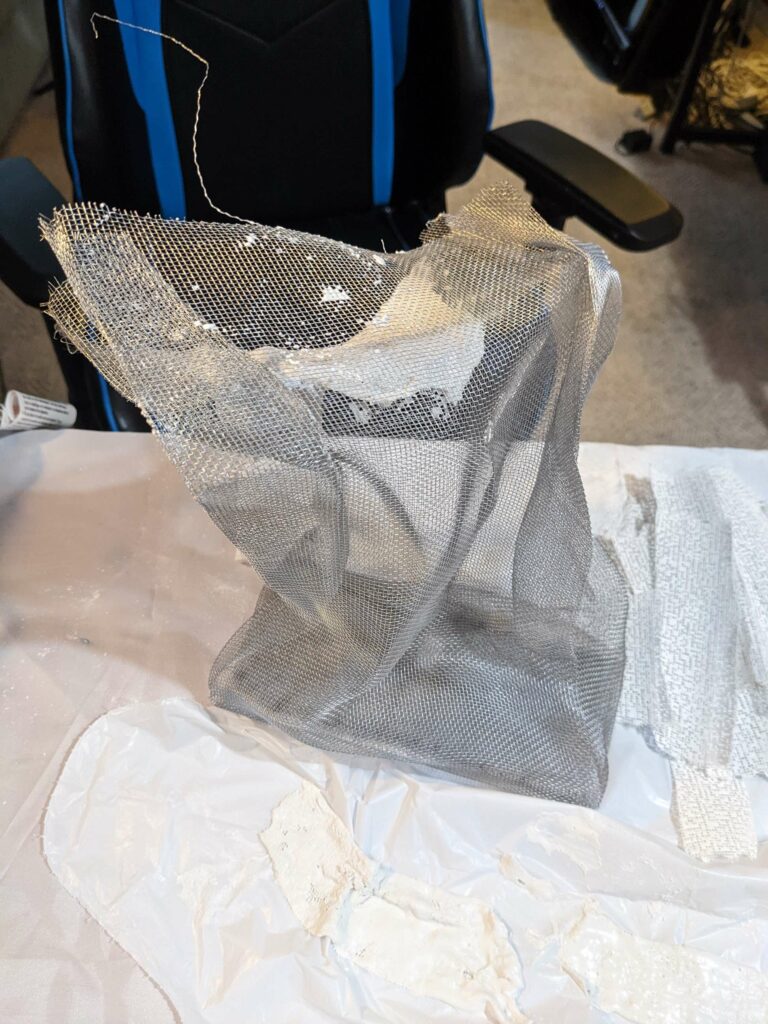
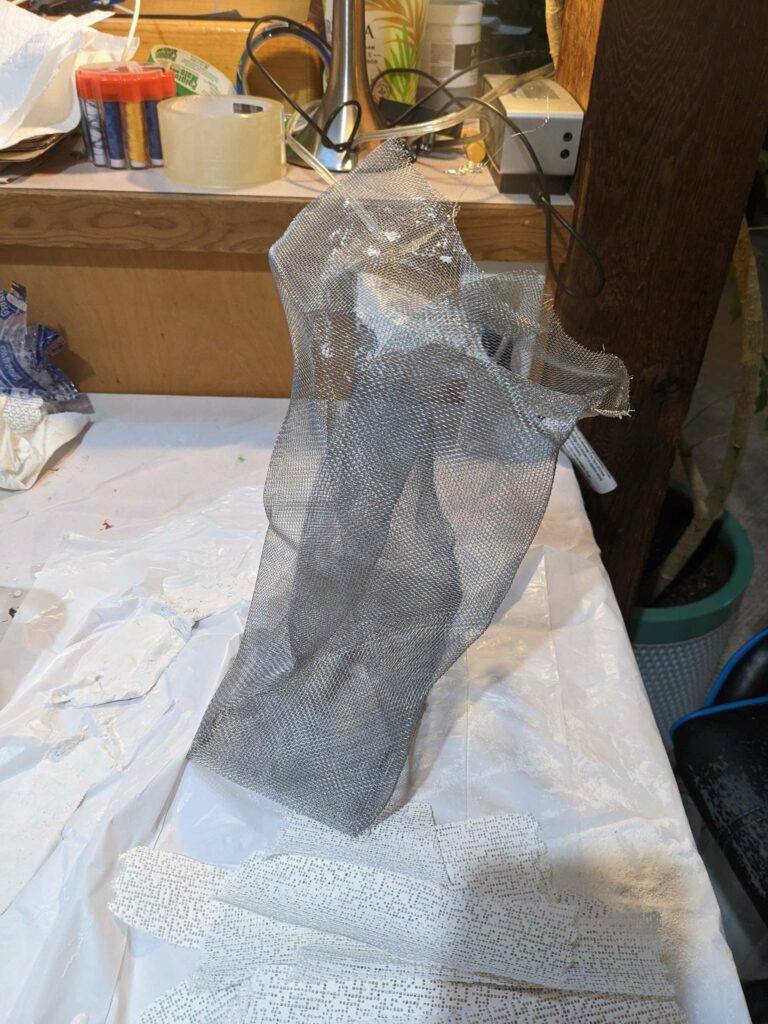

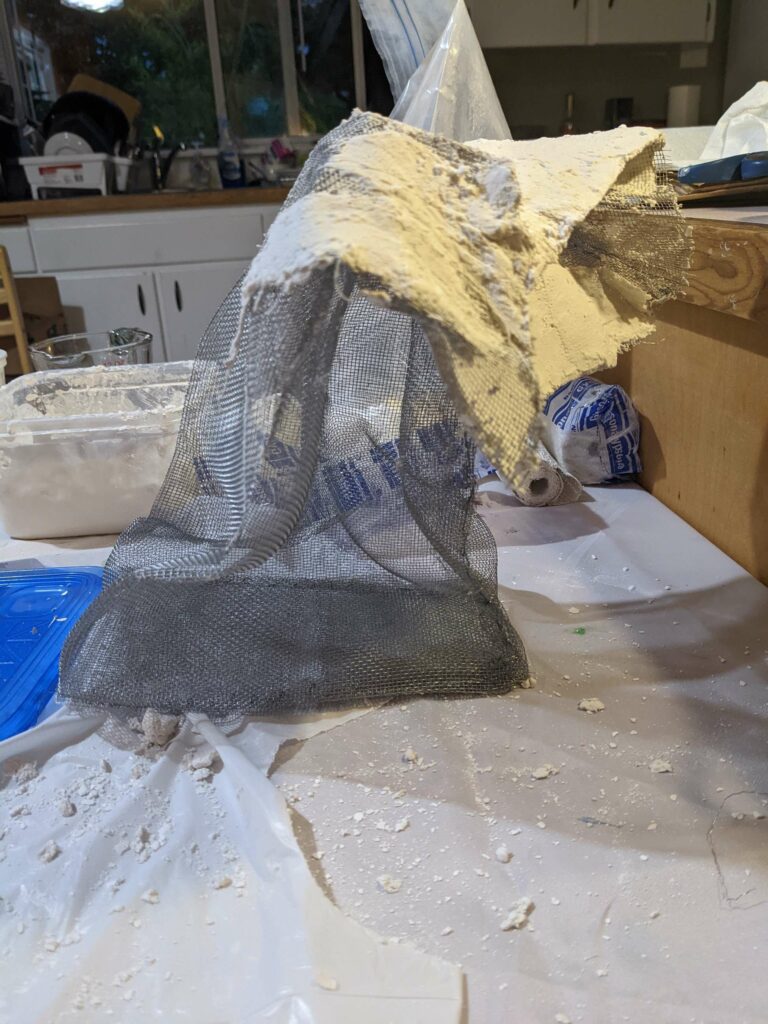
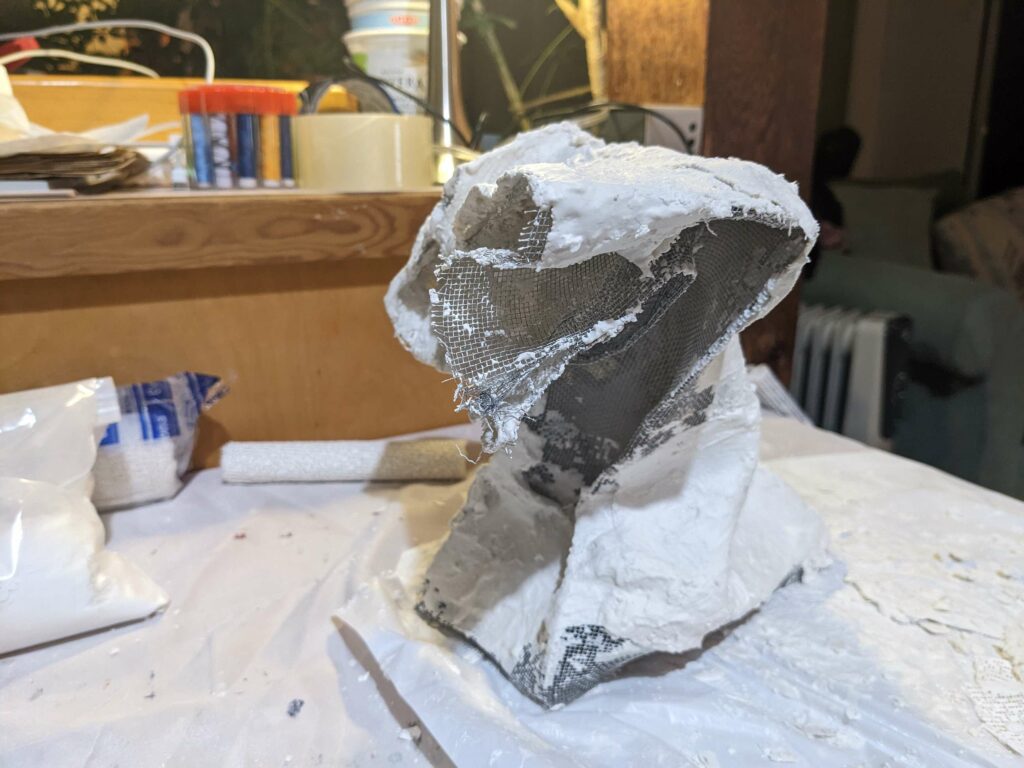
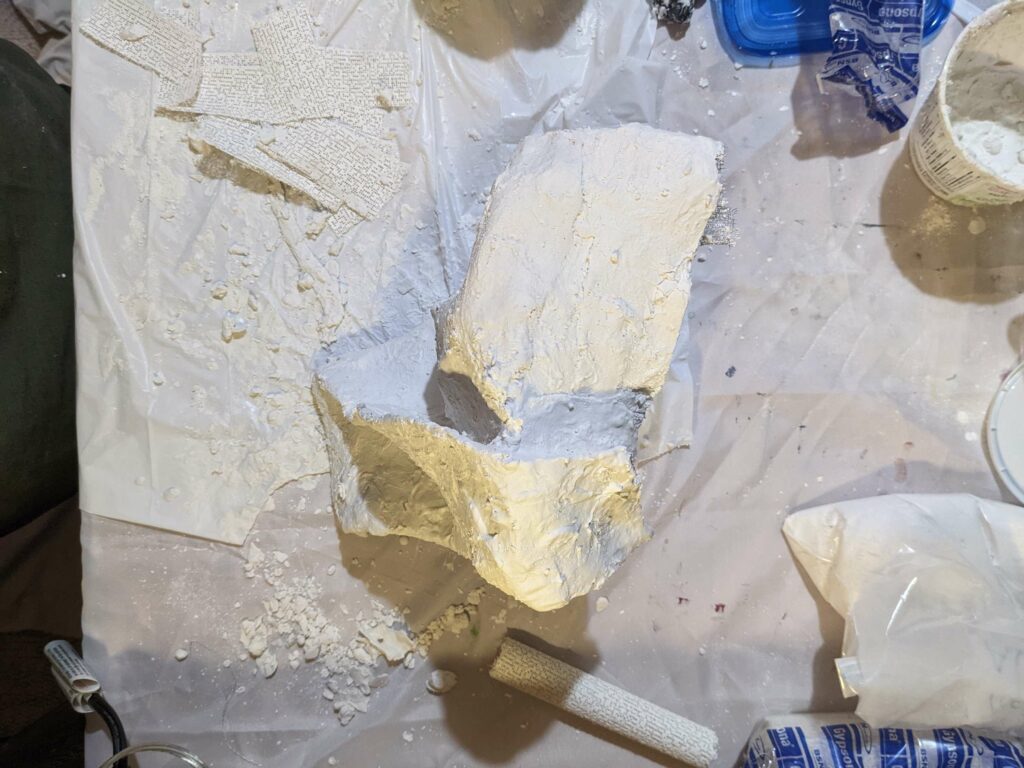
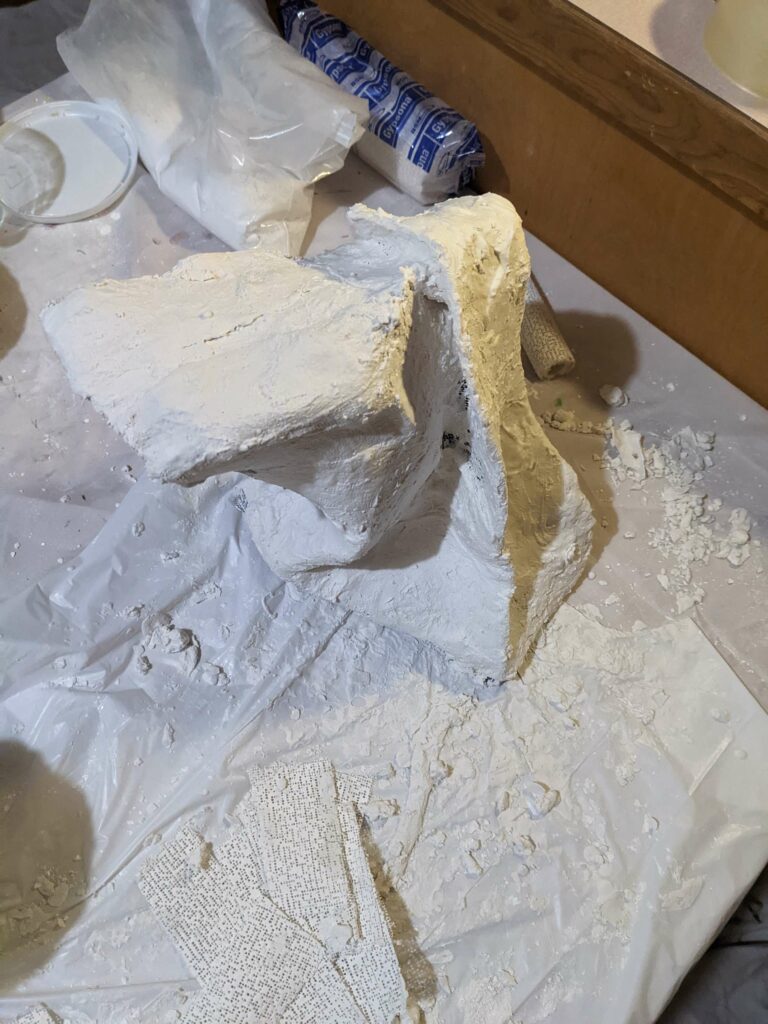
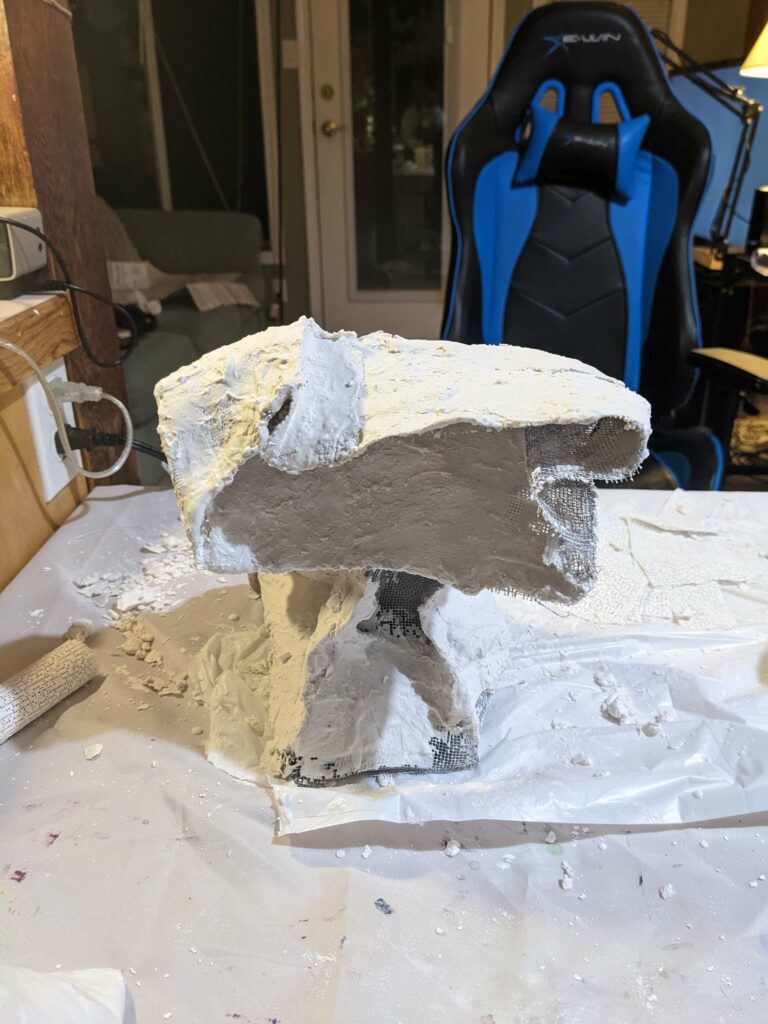

- The process of layering the plaster over top of the bag was slow, I made several batches of the plaster because it dried very quickly.
- The final, top layer of plaster bandages laid on had a fairly watery consistency to it, and I was running low to no plaster by that point, so I used what was available.
- It took about a week or longer to dry from doing this, unfortunately. I likely should’ve brought it in anyway, but I kept it close to my heater once I realized it was drying at a snail’s pace.
- There were many small crevices in this design to get into and initially, I definitely didn’t want the wiring to be visible from these areas or from looking into the bag. Otherwise, the plaster didn’t give me too difficult of a time in terms of the bandages laying where I wanted them to go, sometimes they had a little bit of issue sticking to those more cramped, folded areas but I just made sure to add more bandages as needed.
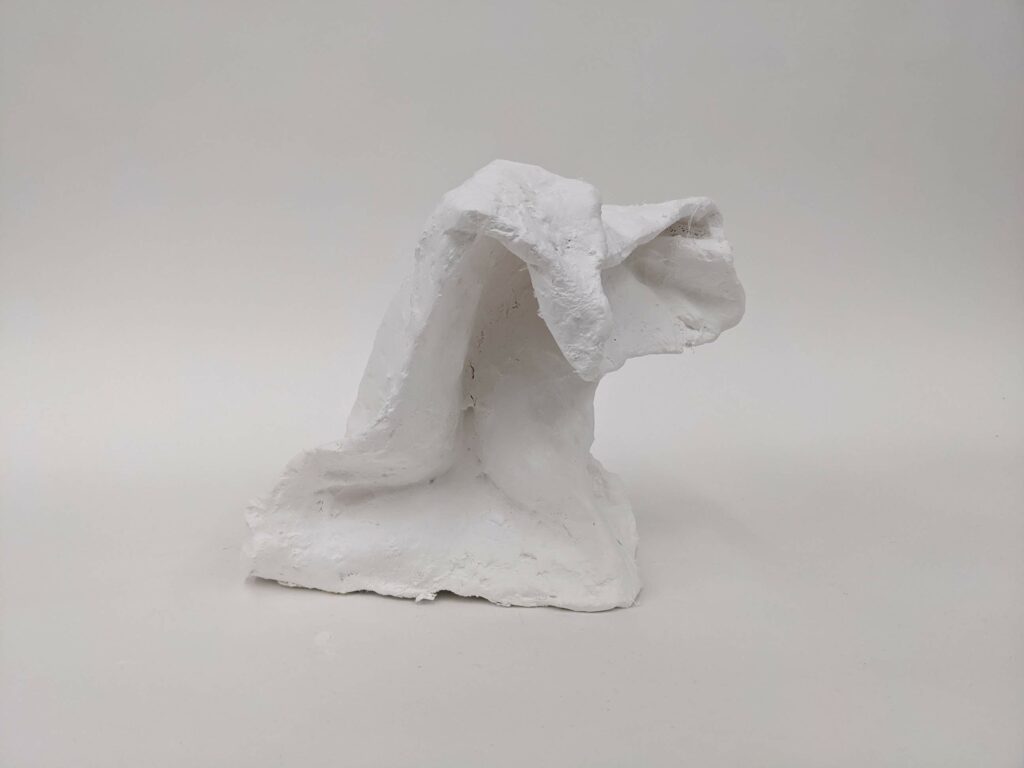
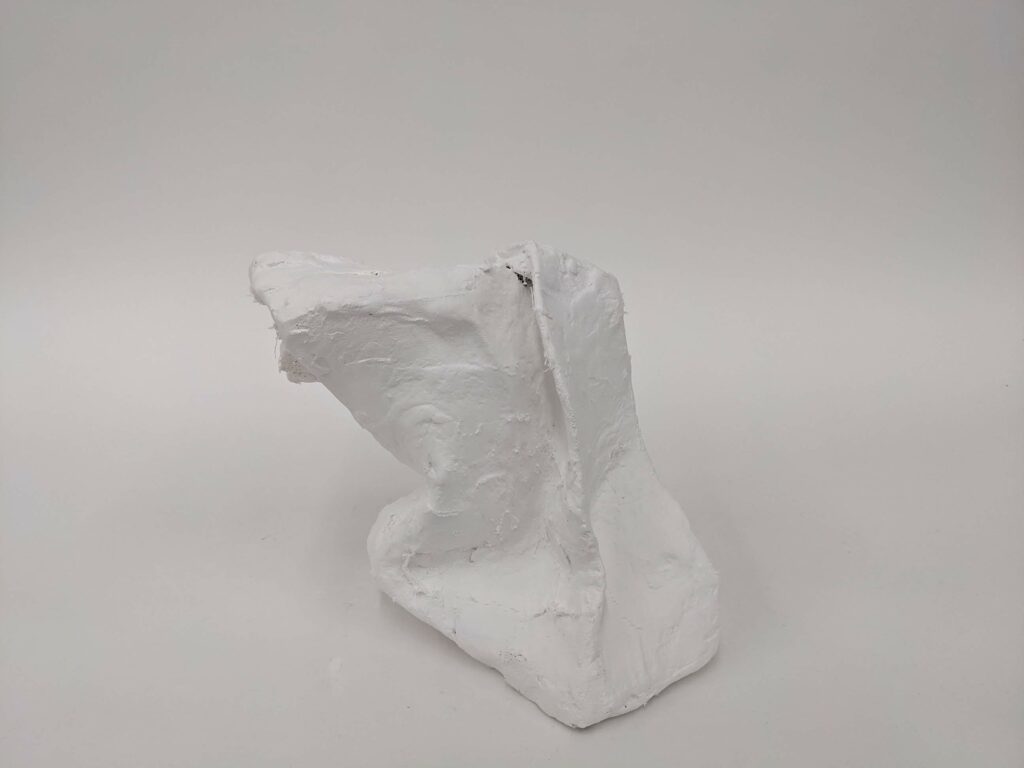
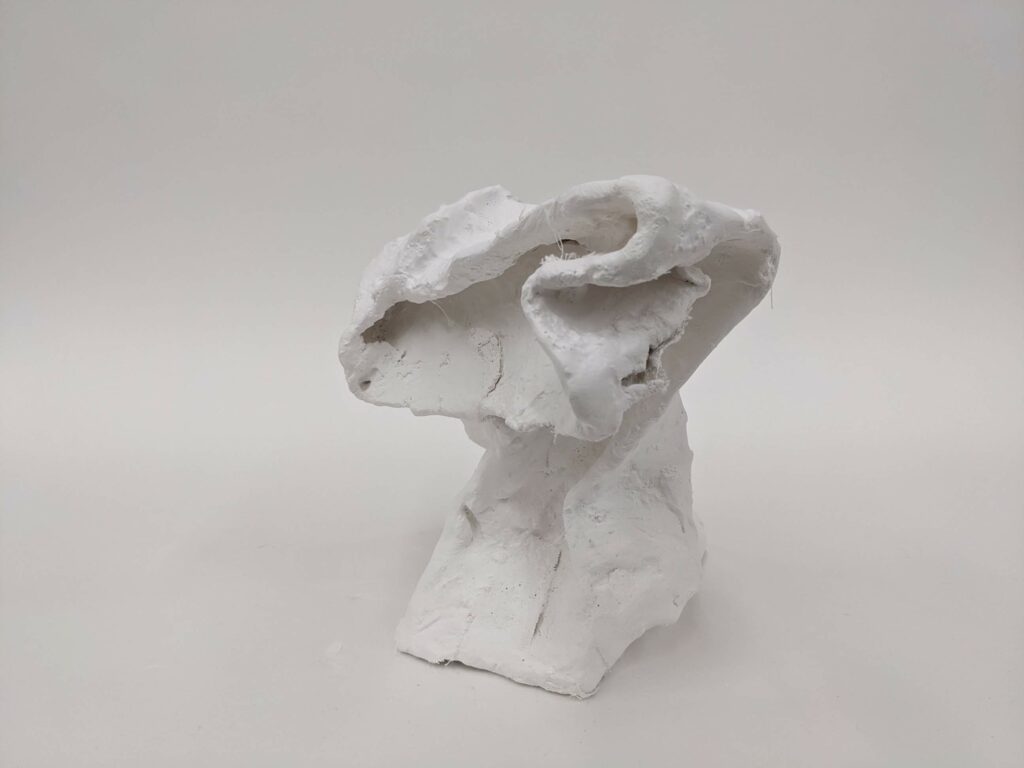
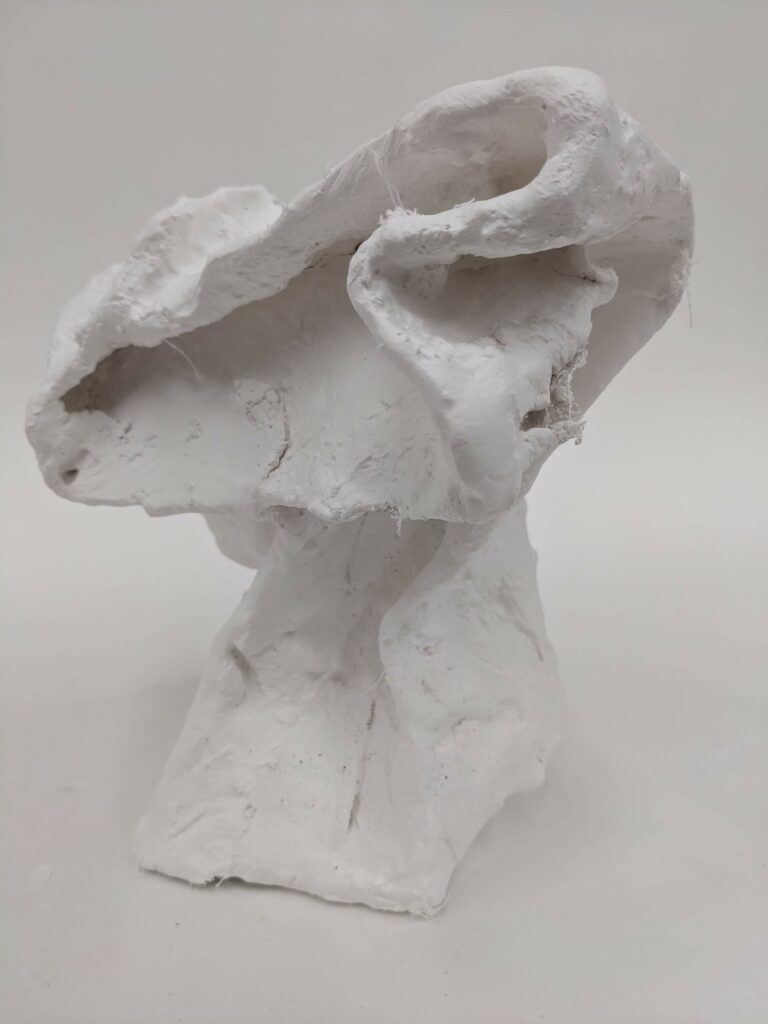
- For my final sanding stage (which I’d known I wanted to do for most of this time, we discussed adding different materials to the project but I wanted to achieve something different and stick with what I had in mind vaguely, especially since I’d picked up the materials for sanding.
- Got prepared to make another mess, and as I was working on it I started to look at the sculpture more as an abstract sculpture, and about the materials we were working with. In lieu of using bandages, I began to look at the piece as a reflection of my progress into the start of the year up until this point – that my life has been a constant cycle of dismantling and reassembling, rebuilding and healing. I felt as though the bandages, which were showing through some of the sanding, added some nice symbolism to this thought and so I decided to use it as a feature instead of unintentional ‘mark-making’ on the piece that would’ve involved trying to hide things or over-sand certain areas.
- While sanding, I eventually learned to find a balance between showing areas of bandage, flattening those that didn’t, softening (and roughing up) some of the more fine, peaked edges.
- Allowing not only the bandage to show, but using the sanding triangle to expose certain areas of bandage, and fine sanding other areas to create the smooth surface more akin to the fully sanded bags.
- While working all the way around the 3-dimensional object, simply viewing, reassessing, and balancing the amount of rough and smooth areas, and which details I wanted to be expressed, which organic lines from the plaster were unavoidably going to show in the final result, and how to get some of the bandage to remain exposed – also added texture created from grating against areas of bandage.
- I peeled some of the bandage back and glued it to stay somewhat attached, as to not be exposing too much wire or appearing unintentional.
- The lighting I was working with at this point lended well to viewing the different angles of light and shadow and how those impacted the view of the object, the strong lighting was very helpful and something I’d recommend to anyone working with an object like this (especially, it was helpful in its final stages and in trying to apply or subtract detail.)
FIN 130 Unit 1
Wire Assignment #1
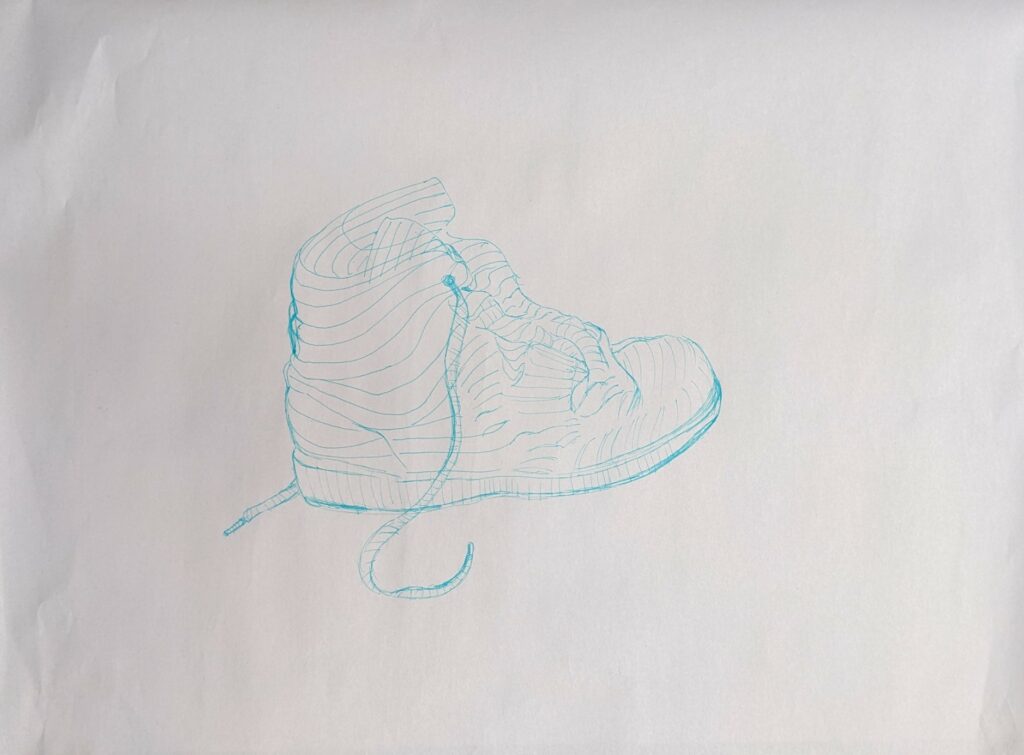
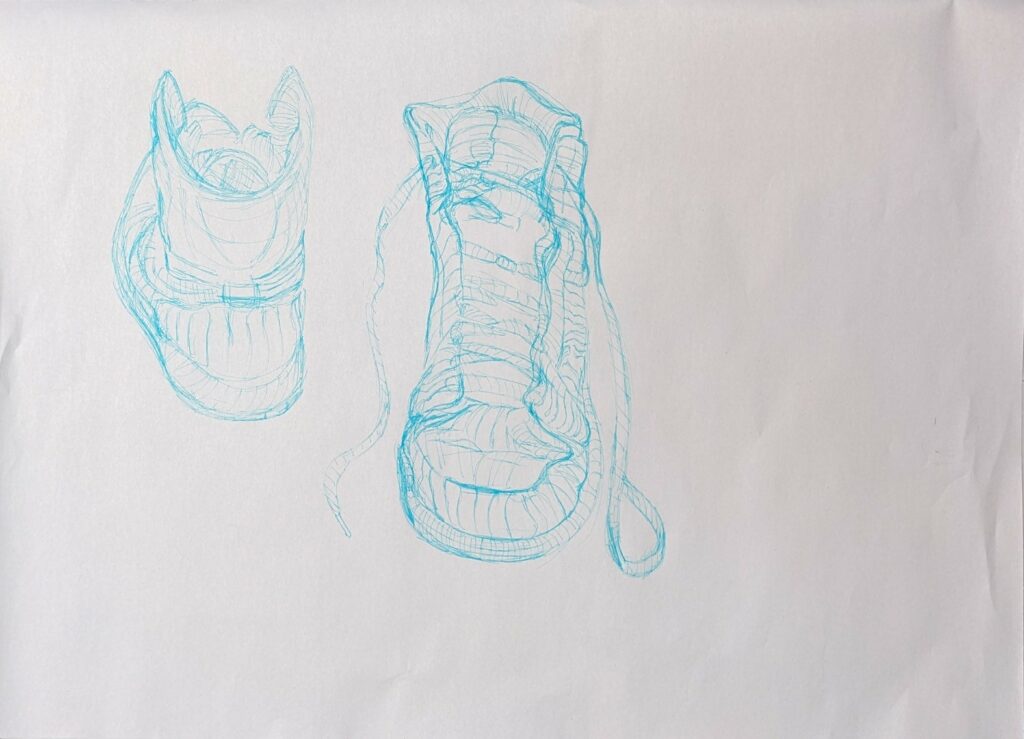
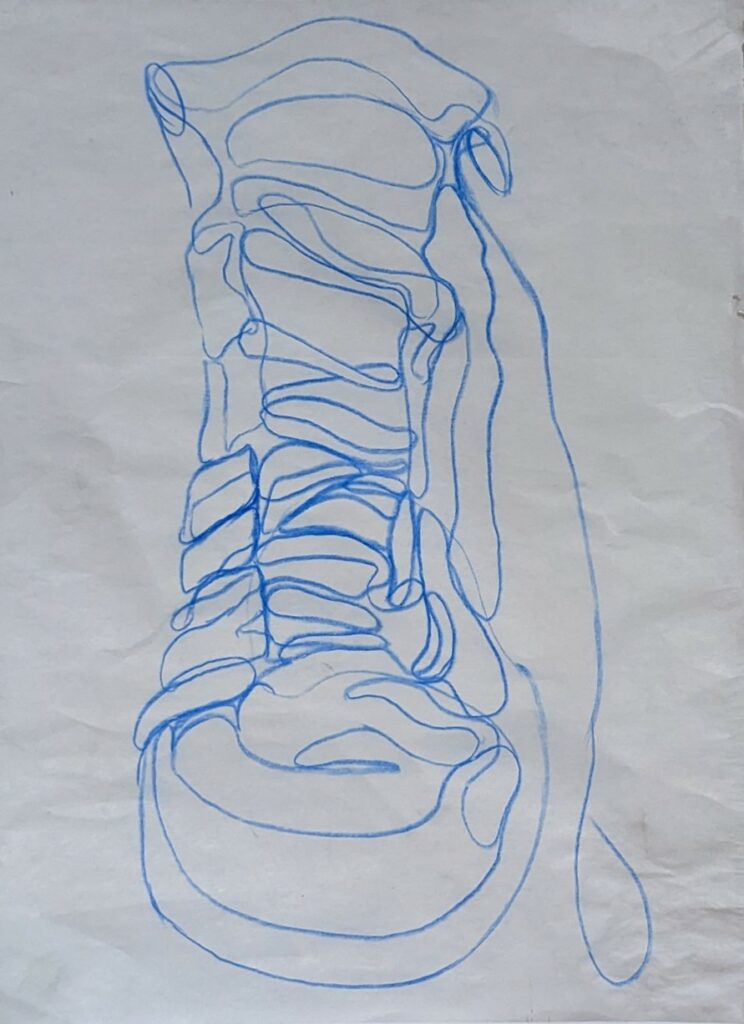
I redrew / traced the shoe drawing with more expression in mind, and the material in mind after playing with the wire for a couple of moments.
The wire sculpture ended up being much more expressive than I’d initially imagined, but I remained open-minded to possibilities, rarely having worked with 3D materials in this way and certainly not a wire similar to this.
Challenges revolved around connecting pieces (and where I wanted to do so,) I challenged myself not to cut the wire for the first part of building it, and don’t believe I had the tools to do so either way. Another challenge was that with having built the ‘frame’ mostly as one piece, going right up to the tongue and top of the shoe, it was challenging to work with and always view from the angle that I needed to work with on other parts, being that normally it is mostly stationary on a desk, but while working, a lot of movement was required. It’s certainly maybe easier to leave certain stages of the work, like latching it onto the main piece, closer to the end, and yet usually by halfway through this process of trying to angle it correctly, I find having it connected to the piece allows me to view it more like I’m completing a 3D ‘picture.’ Still, one could compare by size and still achieve a similar or same effect with maybe less trouble moving things around.
Although sometimes I had to choose between keeping the forms functional in that the volume of the shoe wouldn’t collapse in on itself, and details could be preserved (like the bottom rim of the shoe that I chose to incorporate,) overall I was pleased, and because the piece is this expressive and energetic, it didn’t take away from how I view the entire sculpture at all.
Laces were intentionally latched on to be loose, but to hold onto their other wire ‘counterparts’ that are made up of pieces that belong to the main mass of the shoe. Working with this material, I was surprised that perhaps by having a 3D model directly in front of me, imagining the overall shapes that I had to work with and could build upon, keep or lose, was not as difficult as I once thought, and also allowed for creativity.
This was a great project to work on with my hands and was something I was surprised to actually enjoy. It kept my mind focusing on something productive, and was a great way to just lose time while having an end goal in mind. I feel like this is the kind of feeling people without a hobby or crafters pine after, and certainly having a busy mind it was a helpful practice. It felt similar to putting a puzzle together, except that puzzle is 3D and instead we have an opportunity to create a sort of duplicate or replica of something that already exists, but to put our own unique spin on it. It felt like a good introduction to working with 3D materials for me.
